Economic Theories and Philosophers Quotations
13 Insights From Behavioral Economics Pioneers

In recent years, did you know that there has been a rapid increase in the popularity of behavioral economics? According to a study by Harvard Business Review, 85% of companies are now incorporating behavioral economics to inspire innovation and promote growth.
This fascinating field combines psychology and economics to uncover the hidden drivers behind human decision-making. As pioneers in this field, we have compiled 13 groundbreaking insights from the minds of behavioral economics visionaries such as Daniel Kahneman, Richard Thaler, and Nassim Nicholas Taleb.
These insights shed light on cognitive biases, irrational behavior, and even the impact of black swan events on our decision-making. Prepare to be amazed as we explore these captivating ideas that are revolutionizing the way we understand and shape human behavior.
Key Takeaways
- Behavioral economics combines psychology and economics to understand decision-making processes.
- Cognitive biases, such as availability bias and confirmation bias, can impact financial markets.
- Nudge Theory and choice architecture can influence decision-making by making small changes in choices and using default options.
- Prospect theory explains how individuals make decisions under uncertainty and has applications in investment decisions and marketing strategies.
Daniel Kahneman on Cognitive Biases
One of the key insights from Daniel Kahneman’s work is that we’re all prone to cognitive biases. These biases, which are inherent in our decision-making processes, can have a significant impact on financial markets. Cognitive biases are systematic errors in thinking that occur due to our reliance on mental shortcuts or heuristics. They can lead us to make irrational decisions and judgments, often without us even realizing it.

In the context of financial markets, cognitive biases can distort our perception of risk and reward, leading to suboptimal investment decisions. For example, the availability bias causes us to rely heavily on readily available information when making investment choices, rather than considering a broader range of relevant factors. This can result in an overemphasis on recent market trends or the opinions of others, leading to herd behavior and market bubbles.
Another cognitive bias that impacts financial markets is the confirmation bias. This bias leads us to seek out information that confirms our existing beliefs or opinions, while disregarding or downplaying contradictory evidence. In the context of investing, this can lead to a failure to consider alternative viewpoints or to reassess our investment strategy when new information becomes available.
Understanding and recognizing these cognitive biases is crucial for investors and financial professionals. By being aware of the potential pitfalls and biases in our decision-making processes, we can strive to make more rational and informed investment choices. This can ultimately lead to better outcomes in the dynamic and ever-changing world of financial markets.
Richard Thaler on Nudge Theory
How does Richard Thaler’s concept of Nudge Theory influence our decision-making processes in financial markets?

Nudge Theory, a concept pioneered by Richard Thaler, has revolutionized the field of behavioral economics research and its implementation in various domains, including financial markets.
Thaler’s theory suggests that small changes in the way choices are presented can have a significant impact on people’s decisions.
In the context of financial markets, Nudge Theory has been used to design interventions that steer individuals towards making better financial choices.
Here are two key ways in which Nudge Theory influences our decision-making processes in financial markets:
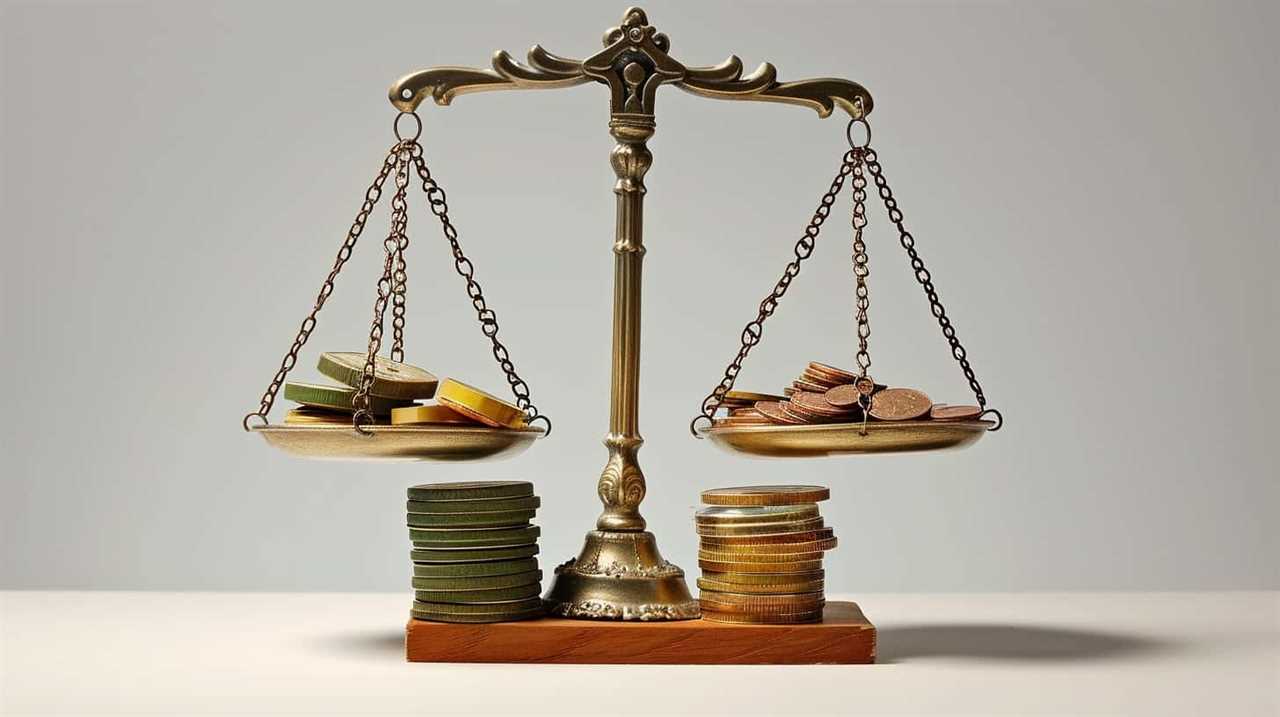
- Choice Architecture: Nudge Theory emphasizes the importance of carefully designing the environment in which decisions are made. By presenting information in a clear and understandable manner, individuals can be guided towards making informed financial decisions.
- Default Options: Another key aspect of Nudge Theory implementation in financial markets is the use of default options. By setting default choices that align with individuals’ best interests, such as automatically enrolling individuals in retirement savings plans, decision-makers can encourage positive financial behaviors.
Through these strategies, Nudge Theory has the potential to improve individuals’ financial outcomes by nudging them towards making choices that align with their long-term goals.
This innovative approach has gained significant traction in the field of behavioral economics research and continues to shape our understanding of decision-making processes in financial markets.
Amos Tversky on Heuristics and Biases
Amos Tversky’s research on heuristics and biases provides valuable insights into the cognitive shortcuts and systematic errors that influence our decision-making processes.
Heuristics are mental shortcuts that we use to simplify complex decision-making tasks, allowing us to make faster and more efficient choices. However, these heuristics can also lead to biases, which are systematic errors in our thinking that can distort our judgment and decision-making.
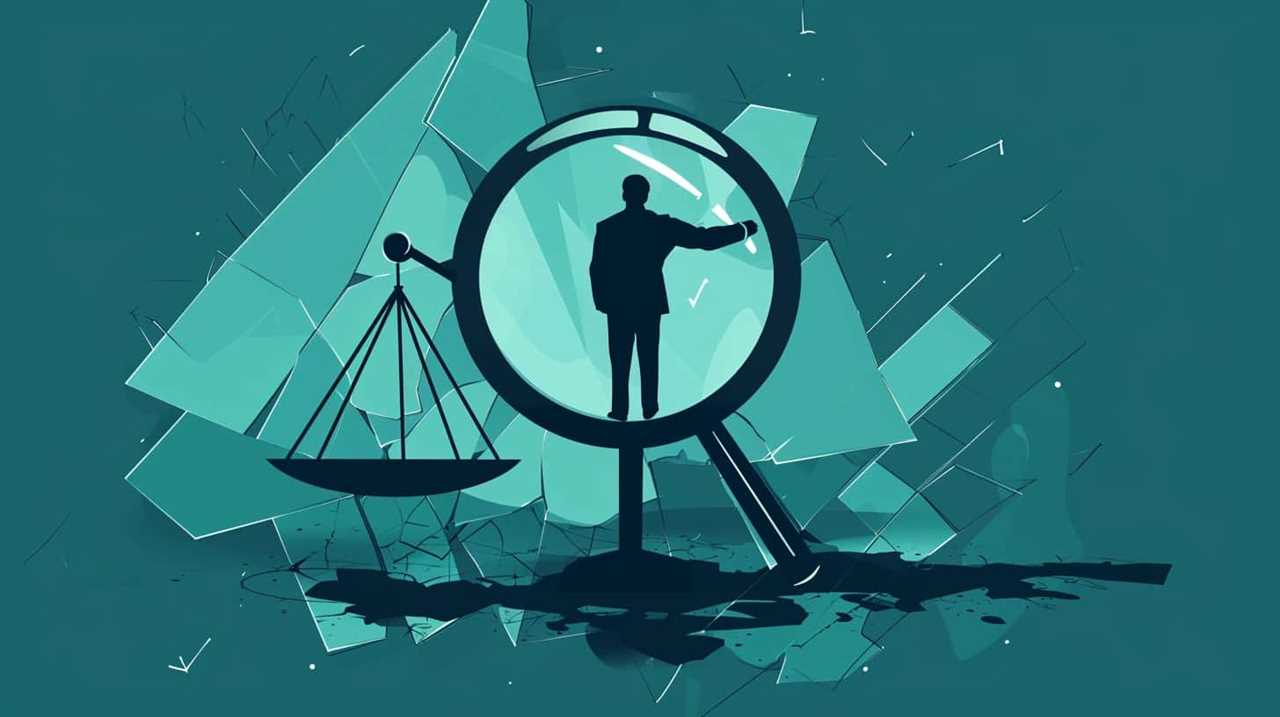
One example of a heuristic is the availability heuristic, where we base our judgments on the ease with which examples come to mind. For instance, if we can easily recall recent news stories about plane crashes, we may overestimate the likelihood of being in a plane crash ourselves. This bias can lead to irrational fears and influence our decisions, such as avoiding air travel unnecessarily.
Another common bias is the confirmation bias, where we seek out information that confirms our pre-existing beliefs and ignore or discount information that contradicts them. This bias can lead to poor decision-making, as we may overlook important evidence or fail to consider alternative perspectives.
By understanding these heuristics and biases, we can become more aware of the potential pitfalls in our decision-making processes. This awareness allows us to actively counteract these biases and make more rational and informed decisions.
Ultimately, Tversky’s work highlights the importance of being mindful of our cognitive biases and employing critical thinking to improve our decision-making abilities.
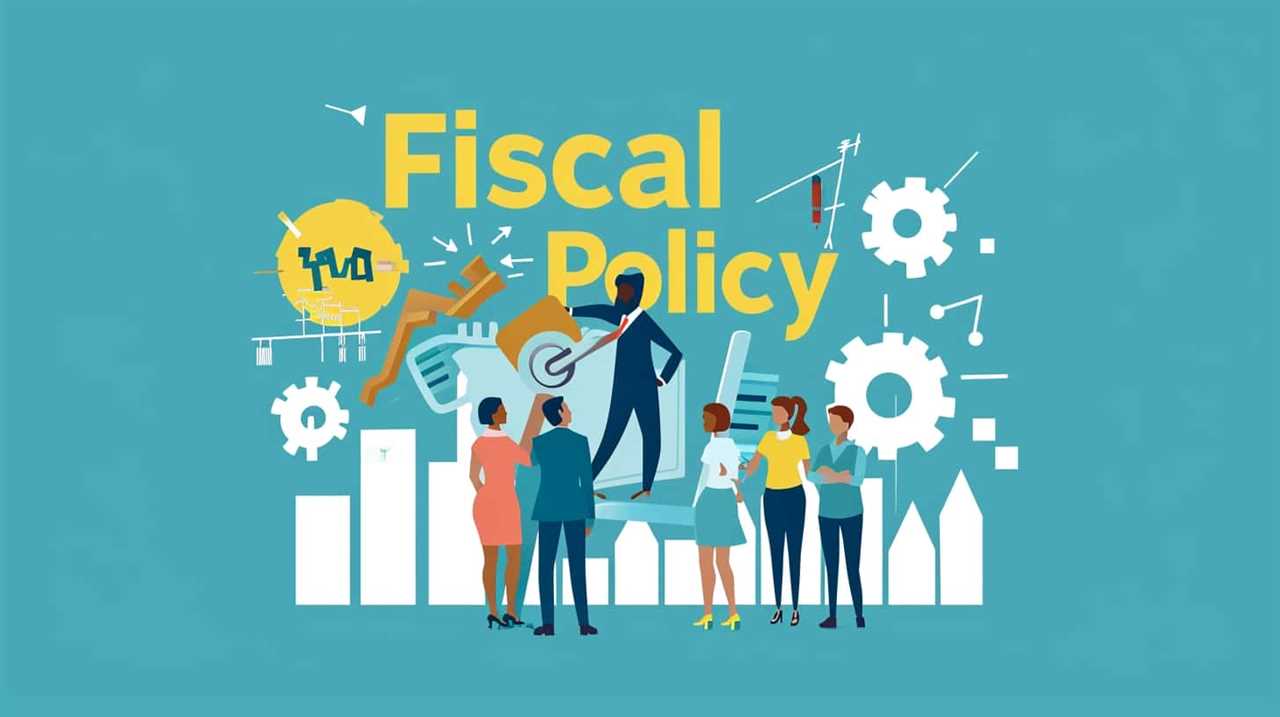
Herbert Simon on Bounded Rationality
Herbert Simon’s exploration of bounded rationality revolutionized the field of behavioral economics. His groundbreaking insight challenged the traditional assumption of perfect rationality and instead proposed that humans have limited cognitive abilities and information processing capabilities.
Simon’s work emphasized that decision-making is a complex process influenced by various constraints, such as time, information availability, and cognitive limitations. By acknowledging these limitations, Simon highlighted the importance of understanding and incorporating human cognitive biases into economic models, leading to a more realistic understanding of human behavior.
Rationality and Limitations
Exploring rationality and its limitations, we delve into the concept of bounded rationality as pioneered by Herbert Simon. Bounded rationality suggests that individuals make decisions based on cognitive limitations and incomplete information, leading to deviations from perfect rationality. This idea challenges the traditional economic assumption of human beings as fully rational decision makers.
Some key insights on rationality and its limitations include:

- Cognitive Biases:
- Confirmation Bias: The tendency to seek and interpret information that confirms preexisting beliefs.
- Anchoring Bias: The tendency to rely heavily on the first piece of information encountered when making decisions.
- Irrational Decision Making:
- Loss Aversion: The tendency to strongly prefer avoiding losses over acquiring gains.
- Overconfidence Bias: The tendency to overestimate one’s own abilities and knowledge.
Herbert Simon’s Groundbreaking Contribution
Moving forward from our exploration of rationality and its limitations, we now delve into the groundbreaking contribution of Herbert Simon on bounded rationality. Simon, an American economist and Nobel laureate, challenged the traditional assumption of perfect rationality in decision making and introduced the concept of bounded rationality. He argued that individuals are limited by cognitive constraints and information processing capabilities, leading to a more realistic understanding of human decision making. This idea had a profound impact on economic theory, as it highlighted the importance of understanding how individuals make decisions in the real world.
To illustrate the concept of bounded rationality, consider the following table:
| Bounded Rationality | Perfect Rationality |
|---|---|
| Limited information processing | Unlimited information processing |
| Cognitive constraints | No cognitive constraints |
| Satisficing behavior | Optimal decision making |
Simon’s work not only revolutionized our understanding of decision making but also paved the way for further research in the field of behavioral economics. By acknowledging the limitations of human rationality, economists and policymakers can now develop more effective strategies to shape individual behavior and improve economic outcomes.
Dan Ariely on Irrational Behavior
In this article, we delve into Dan Ariely’s insights on irrational behavior. Ariely, a renowned behavioral economist, has made significant contributions to our understanding of why humans often make irrational decisions. His research has shed light on the cognitive biases that influence our decision-making processes.

Here are two key insights from Ariely’s work:
- Irrational Decision Making: Ariely argues that humans frequently make decisions that aren’t in their best interest, contradicting the traditional economic assumption of rationality. He’s conducted numerous experiments to demonstrate how our emotions, biases, and heuristics can lead to irrational choices.
For instance, his experiments on the ‘endowment effect’ show that people tend to value items more highly simply because they own them, which can result in irrational pricing decisions.
- Cognitive Biases: Ariely has also explored the various cognitive biases that impact our decision making. One prominent example is the ‘anchoring effect,’ where individuals rely heavily on the first piece of information they receive when making judgments. This bias can lead to irrational pricing decisions, as people anchor their valuations to initial reference points.
Ariely’s insights on irrational behavior challenge traditional economic models and provide a more nuanced understanding of human decision making. By recognizing our cognitive biases, we can overcome irrationality and make more informed choices. These findings have important implications for fields such as marketing, finance, and public policy.
Robert Shiller on Behavioral Finance
After exploring Dan Ariely’s insights on irrational behavior, we now turn our attention to Robert Shiller’s contribution to the field of behavioral finance. Shiller, a Nobel laureate in economics, is renowned for his groundbreaking research in this area. His work has revolutionized our understanding of how emotions and psychological biases drive financial decision-making.

Shiller’s research in behavioral finance focuses on the influence of human behavior on asset prices and market outcomes. He argues that traditional economic models, which assume rationality and efficiency in financial markets, fail to capture the complexity of human behavior and its impact on market dynamics. By integrating insights from psychology and economics, Shiller has provided a more accurate and nuanced understanding of market irrationality and its consequences.
One of Shiller’s most notable contributions is his development of the concept of ‘irrational exuberance,’ which refers to periods of excessive optimism or pessimism in financial markets. He argues that these irrational beliefs and emotions can lead to speculative bubbles and subsequent market crashes. Shiller’s research has also highlighted the role of narratives and stories in shaping market behavior, emphasizing the importance of understanding the psychological factors that drive market fluctuations.
Cass Sunstein on Choice Architecture
Choice Architecture, also known as Nudge, is a concept introduced by Cass Sunstein that explores how the way options are presented can influence our decision-making.
One key aspect is the use of default options, where a pre-selected choice is presented as the default, leading people to stick with it.

This approach has been applied in various contexts, such as encouraging organ donation or increasing retirement savings, demonstrating the power of behavioral insights in driving positive behavior change.
Nudge or Choice Architecture
From our perspective, we can effectively influence decision-making through the use of choice architecture, as explained by Cass Sunstein. Nudge implementation and behavioral interventions play a crucial role in shaping people’s choices.
Here are two key ways in which choice architecture can be employed:
- Framing: By presenting options in a certain way, we can influence individuals to make decisions that align with their best interests. For example, highlighting the positive consequences of a healthy lifestyle can encourage people to choose healthier food options.
- Default Options: Setting default options can significantly impact decision-making. People tend to stick with the default choice, so by strategically selecting defaults, we can nudge individuals towards desired behaviors. For instance, making organ donation the default option on driver’s licenses can greatly increase donation rates.
With these approaches, we can guide decision-making towards beneficial outcomes, promoting innovation in behavior change.

Transitioning into the subsequent section about ‘default options and nudging’, let’s explore how defaults can be utilized as powerful nudges.
Default Options and Nudging
Let’s dive into how default options and nudging, as explained by Cass Sunstein, can shape decision-making through choice architecture.
Default options are the pre-selected settings that are in place when we make a decision. Sunstein argues that these default settings have a powerful influence on our choices. By strategically setting defaults, policymakers and designers can nudge individuals towards certain decisions without restricting their freedom of choice.
For example, automatically enrolling employees in retirement savings plans with the option to opt out has led to increased participation rates. This small shift in default settings has had a significant impact on people’s financial well-being.

Choice architecture, therefore, plays a crucial role in influencing decisions, as it determines the context in which choices are made. By understanding and leveraging these behavioral insights, we can design innovative solutions that guide individuals towards better outcomes.
Behavioral Insights in Practice
Continuing our exploration of behavioral insights, we frequently observe the practical application of choice architecture through Cass Sunstein’s perspective on behavioral insights in practice. Sunstein, a renowned legal scholar and one of the pioneers of behavioral economics, has extensively studied the impact of choice architecture on decision making.
Here are some application examples and their effects on decision making:
- Default options: By strategically setting default options, such as organ donation consent or retirement savings plans, organizations can significantly influence people’s choices. For instance, countries that have an opt-out organ donation system tend to have higher donation rates.
- Nudging: Through subtle changes in the presentation of choices, known as nudges, decision makers can be guided towards making better decisions. A classic example is placing healthier food options at eye level in cafeterias, leading to increased consumption of nutritious meals.
These examples demonstrate how choice architecture can be effectively utilized to shape decision making and promote positive outcomes. By understanding the psychological factors that influence choices, organizations can design environments that nudge individuals towards making choices aligned with their best interests.

George Akerlof on Information Asymmetry
In exploring George Akerlof’s insights on information asymmetry, we uncover the significant impact it has on decision-making processes. Akerlof’s research findings reveal the implications of information asymmetry, where one party in a transaction possesses more information than the other. This imbalance of information can lead to adverse outcomes and inefficiencies in the market.
One of Akerlof’s most famous examples is the market for used cars. In this scenario, the seller possesses more information about the condition of the car than the buyer. As a result, buyers may be reluctant to purchase used cars due to the fear of unknowingly buying a lemon. This leads to a decrease in market efficiency and a higher level of caution from buyers, ultimately affecting their decision-making processes.
Furthermore, Akerlof’s research highlights the role of information asymmetry in various other contexts. For instance, it affects the decision-making processes of lenders in the credit market, insurers in the insurance market, and even employers in the labor market. In each case, the party with less information faces a higher level of risk and uncertainty, leading to suboptimal choices.
Vernon Smith on Experimental Economics
Vernon Smith revolutionized economics with his pioneering work in experimental economics. He developed new methods to study economic decision making in controlled laboratory settings, allowing for more rigorous testing of economic theories. His contributions have had a significant impact on the field, providing valuable insights into human behavior and challenging traditional economic assumptions.

Key insights from Vernon Smith’s work in experimental economics include:
- Use of Experimental Methods: Smith recognized the importance of conducting experiments to understand economic behavior. By creating controlled environments, he was able to observe how individuals make decisions, interact with others, and respond to different incentives. This approach allowed for a deeper understanding of economic phenomena that couldn’t be fully captured by theoretical models alone.
- Understanding Economic Decision Making: Smith’s experiments shed light on how individuals make decisions in economic situations. His research explored topics such as market behavior, bargaining, and auctions. Through carefully designed experiments, he was able to uncover the underlying motivations and strategies that drive economic decision making.
Nassim Nicholas Taleb on Black Swan Events
Nassim Nicholas Taleb provides valuable insights into black swan events, which are unpredictable and highly impactful occurrences that defy traditional economic models. These events, by their very nature, are rare and unexpected, making them difficult to predict and prepare for. However, Taleb argues that risk management should focus on the impact of these events rather than their probability.
Traditional models assume that the future will resemble the past, but black swan events challenge this assumption by introducing unprecedented and unforeseen circumstances. Taleb suggests that instead of relying solely on historical data, risk management should incorporate a more robust approach that accounts for extreme events. This involves embracing uncertainty and acknowledging the limitations of traditional models. By doing so, organizations can better prepare for the unexpected and mitigate the potential negative consequences.
Furthermore, Taleb emphasizes the importance of being resilient in the face of black swan events. Rather than attempting to predict or prevent these events, organizations should focus on building adaptive systems that can withstand and recover from such shocks. This involves diversifying investments, fostering a culture of innovation, and continually reassessing and adjusting strategies in response to new information.
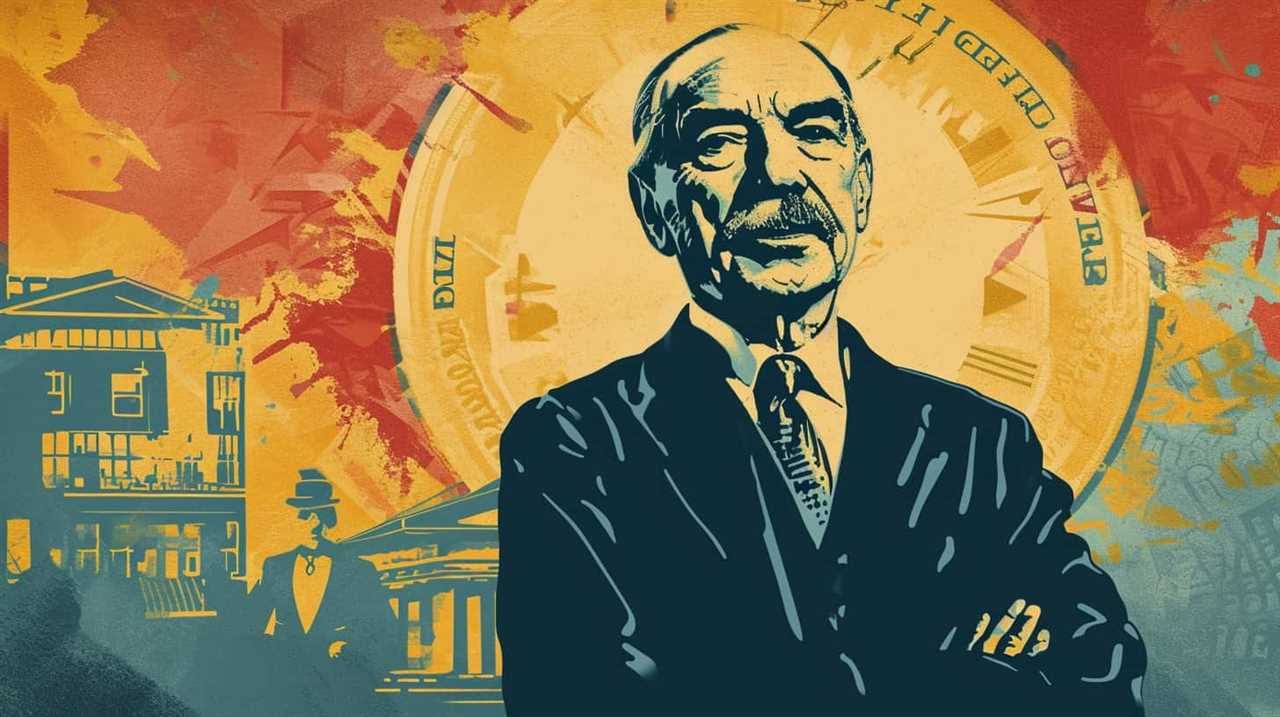
Gary Becker on Human Capital
As we delve into the topic of ‘Gary Becker on Human Capital’, it’s important to understand the significance of human capital in economic analysis. Human capital refers to the knowledge, skills, and experience possessed by individuals that contribute to their productivity and potential for future earnings. Becker’s pioneering work highlighted the importance of investing in human capital and the returns on such investments.
Here are two key insights from Becker’s work on human capital:
- Human capital investment: Becker argued that individuals and societies can enhance their productivity and economic outcomes by investing in education, training, and skill development. By allocating resources to human capital development, individuals can increase their earning potential and contribute to economic growth.
- Returns on investment: Becker emphasized that investments in human capital generate long-term returns, both for individuals and society as a whole. Higher levels of education and skill acquisition lead to higher wages, improved job prospects, and greater economic mobility. Additionally, societies that prioritize human capital development tend to experience higher levels of innovation, productivity, and overall economic prosperity.
Thaler and Sunstein on Libertarian Paternalism
In our exploration of behavioral economics pioneers, we examine the concept of libertarian paternalism as presented by Thaler and Sunstein. Libertarian paternalism, also known as ‘nudge theory,’ suggests that individuals can be guided towards making better choices without limiting their freedom. However, this approach has faced criticism.
One critique of libertarian paternalism is that it assumes that policymakers always have individuals’ best interests in mind. Skeptics argue that this assumption may not hold true and that those in power may have ulterior motives. Additionally, some question the effectiveness of nudge theory in achieving desired outcomes. They argue that small nudges may not be enough to overcome deeply ingrained behaviors and preferences.
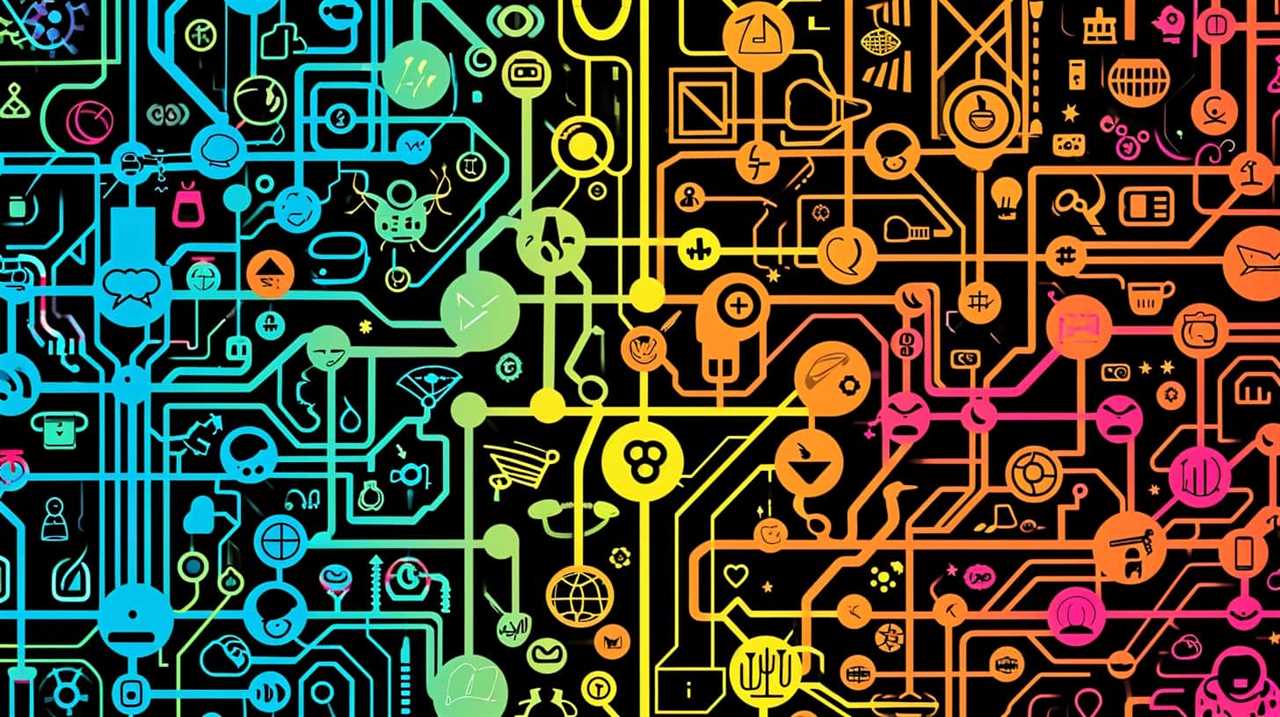
Despite these criticisms, nudge theory has demonstrated some success in various areas. For example, by changing the default option for retirement savings plans, policymakers have increased participation rates significantly. Similarly, nudges like calorie labels on menus have helped individuals make healthier food choices.
Transitioning into the subsequent section about Kahneman and Tversky on prospect theory, it’s important to note that Thaler and Sunstein’s work on libertarian paternalism laid the groundwork for further research in behavioral economics.
Kahneman and Tversky on Prospect Theory
Let’s delve into Kahneman and Tversky’s groundbreaking work on prospect theory.
Prospect theory is a behavioral economic theory that aims to explain how individuals make decisions under uncertainty. It challenges traditional economic theory by introducing the concept of cognitive biases in decision making.

- Prospect theory applications:
- Investment decisions: Prospect theory suggests that individuals are more likely to take risks to avoid losses rather than to achieve gains. This insight has important implications for investment strategies and portfolio management.
- Marketing and consumer behavior: By understanding how individuals perceive gains and losses, marketers can design effective advertising and pricing strategies to influence consumer decision making.
- Cognitive biases in decision making:
- Loss aversion: According to prospect theory, individuals are more sensitive to losses than gains. This bias can lead to irrational decision making, where individuals are willing to take unnecessary risks to avoid losses.
- Framing effect: The way a decision is presented can significantly influence an individual’s choice. Prospect theory highlights the importance of framing in decision making and suggests that people are more likely to choose an option presented as a gain rather than a loss.
Understanding prospect theory and its applications can help us better comprehend the complexities of human decision making. By recognizing and addressing cognitive biases, we can make more informed choices and drive innovation in various fields.
Frequently Asked Questions
What Are Some Common Examples of Cognitive Biases Discussed by Daniel Kahneman in His Section on Cognitive Biases?
Some common examples of cognitive biases discussed by Daniel Kahneman include confirmation bias, availability bias, and anchoring bias. These biases influence our decision-making and can lead to irrational choices. Richard Thaler’s nudge theory also highlights the impact of these biases.
How Does Richard Thaler’s Nudge Theory Propose to Influence People’s Behavior?
Richard Thaler’s nudge theory proposes to influence people’s behavior through subtle interventions that promote desired choices. These applications of nudge theory are part of a larger toolkit of behavioral change strategies that aim to guide individuals towards better decision-making.
Can You Provide Some Examples of Heuristics and Biases Discussed by Amos Tversky in His Section on Heuristics and Biases?
Amos Tversky discusses several heuristics and biases in his section on heuristics and biases, including anchoring and adjustment, availability heuristic, representativeness heuristic, confirmation bias, framing effect, and overconfidence bias.

How Does Herbert Simon’s Concept of Bounded Rationality Explain Decision-Making Limitations?
Bounded rationality, a concept introduced by Herbert Simon, explains decision-making limitations by highlighting how individuals are constrained by time, information, and cognitive abilities. This insight sheds light on why our choices often deviate from perfect rationality.
What Are Some Examples of Irrational Behaviors Discussed by Dan Ariely in His Section on Irrational Behavior?
Examples of irrational behaviors discussed by Dan Ariely in his section on irrational behavior include the anchoring effect and loss aversion. These behaviors demonstrate how our decision-making can be influenced by irrelevant information and our aversion to losses.
Conclusion
In the vast landscape of human behavior, the pioneers of behavioral economics have illuminated the hidden forces that shape our decisions. They’ve shown us the cognitive biases that cloud our judgment, the nudges that guide our choices, and the irrationality that lurks within us all.
Like explorers in uncharted territory, they’ve unveiled the complexities of our minds and paved the way for a deeper understanding of why we do what we do. Through their insights, we can navigate the twists and turns of our own behavior with greater clarity and self-awareness.

Lauren’s talent in writing is matched by her passion for storytelling. Her love for books and deep understanding of culture and entertainment add a distinct flavor to her work. As our media and press contact, Lauren skillfully bridges the gap between afterQuotes and the broader media landscape, bringing our message to a wider audience.
Economic Theories and Philosophers Quotations
Unraveling Kahneman’s Cognitive Biases: A How-To Guide
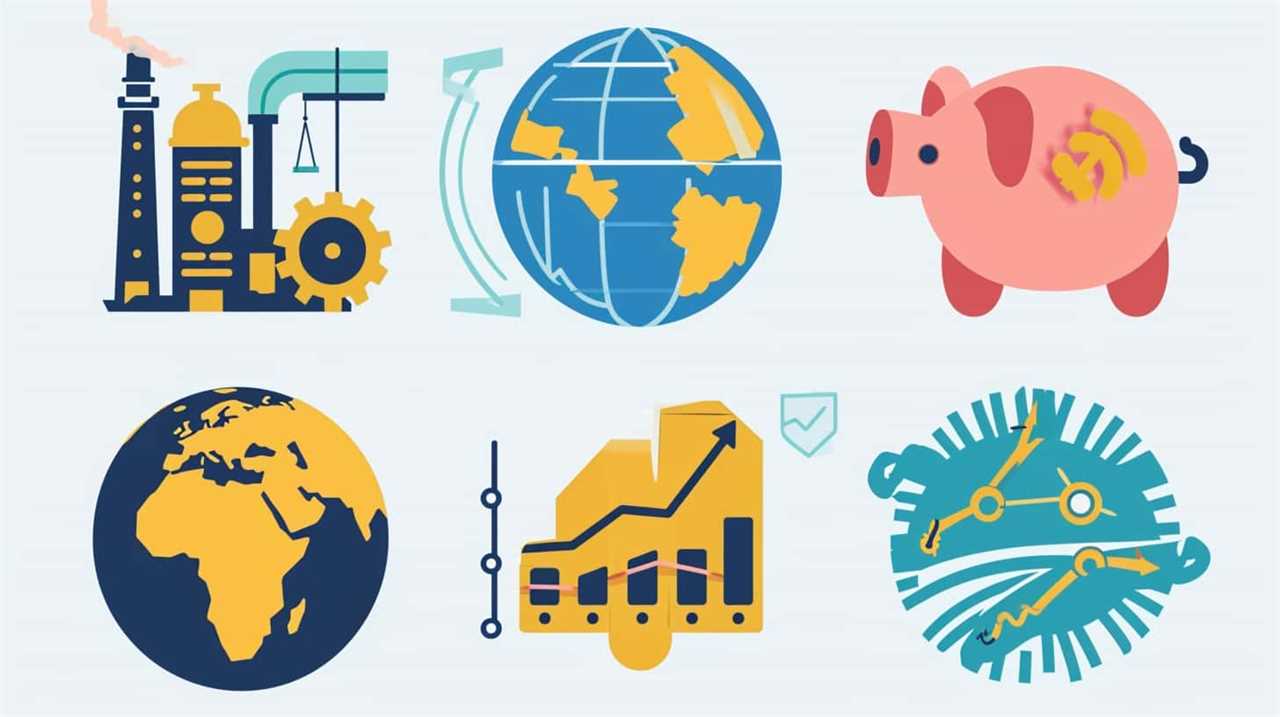
Welcome to our guide on understanding Kahneman’s cognitive biases!
In this innovative how-to guide, we will explore the fascinating world of cognitive biases, as discovered by renowned psychologist Daniel Kahneman.
As a team of experts, we have compiled a comprehensive breakdown of these biases, providing you with the knowledge and tools to navigate them effectively.
From the anchoring bias to the overconfidence bias, we will delve into each bias, uncovering their impact on our decision-making processes.

By understanding these cognitive biases, you will gain a fresh perspective on how your mind works, enabling you to make more informed and innovative choices.
So, let’s embark on this enlightening journey together and unlock the secrets of Kahneman’s cognitive biases!
Key Takeaways
- Understanding cognitive biases is crucial for making informed and innovative choices.
- Anchoring bias heavily relies on the first piece of information and can lead to irrational judgments.
- Confirmation bias perpetuates stereotypes and hinders innovation, but overcoming it opens us to new ideas.
- Availability bias relies on readily available information and can lead to biased judgments, but awareness and seeking additional information can help mitigate it.
Overview of Kahneman’s Cognitive Biases
What are the key cognitive biases outlined by Kahneman?
Understanding cognitive biases is crucial in decision-making processes, particularly for those seeking innovation. Daniel Kahneman, a renowned psychologist and Nobel laureate, identified several cognitive biases that affect our judgment and decision-making abilities. These biases can significantly impact the quality of our choices and hinder our ability to think objectively.

One of the most well-known biases is the confirmation bias, which is our tendency to seek out information that confirms our pre-existing beliefs and ignore evidence that contradicts them. This bias can prevent us from considering alternative perspectives and hinder innovation.
Another important bias is the availability heuristic, where we rely on easily accessible information when making judgments or decisions. This can lead to overlooking important but less readily available information and can limit our ability to think creatively.
Understanding these cognitive biases has practical applications in decision-making. By being aware of these biases, we can actively work to mitigate their effects and make more informed and innovative choices. For example, we can consciously seek out diverse perspectives, challenge our own assumptions, and actively consider a range of possibilities before making a decision.
Anchoring Bias
We can explore the cognitive bias known as the anchoring bias, which influences our decision-making process. The anchoring bias occurs when we rely too heavily on the first piece of information we receive, and it then serves as a reference point for all subsequent decisions. This bias can have a significant impact on our judgment, leading us to make decisions that aren’t necessarily rational or objective.
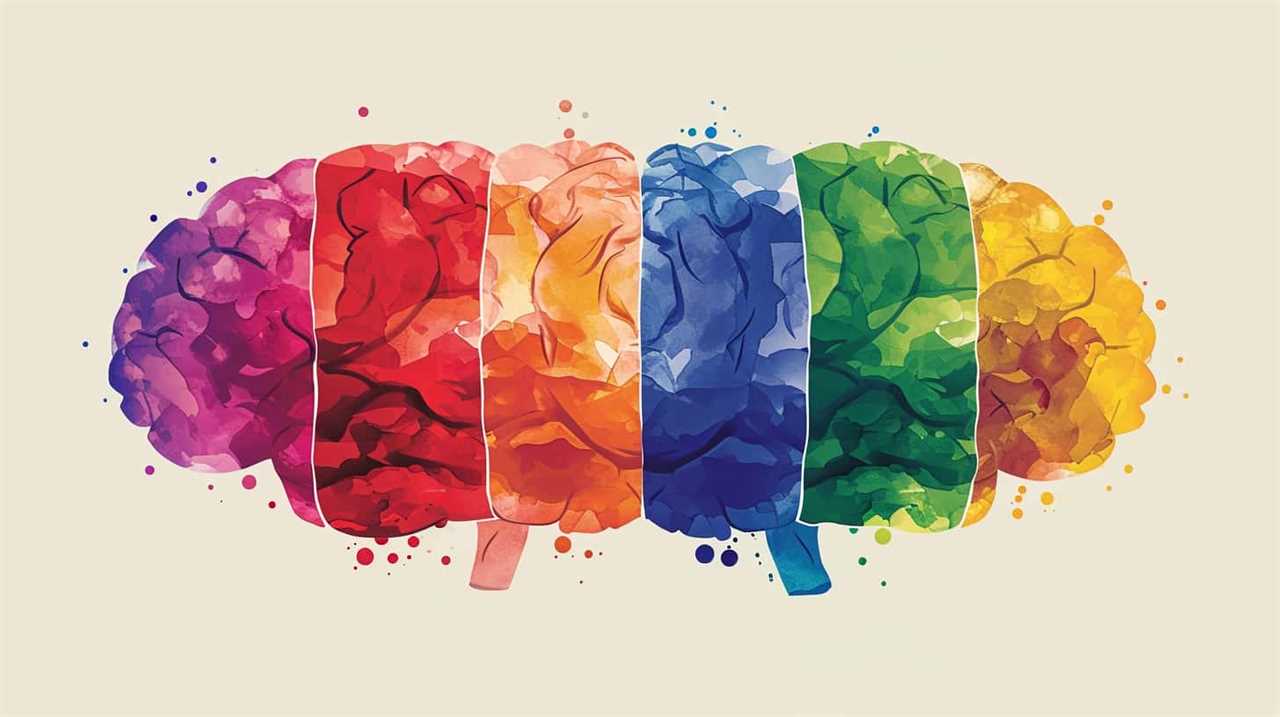
To understand the effects of anchoring bias on decision making, let’s take a look at a real-life example. Imagine you’re shopping for a new laptop. The first store you visit has a high-end laptop priced at $2,000. This initial price sets a reference point in your mind. When you visit another store and see a laptop priced at $1,500, you may perceive it as a bargain, even though it may not necessarily be the best value for your money.
Another real-life application of anchoring bias can be seen in negotiations. The first offer made in a negotiation often serves as an anchor, influencing the rest of the negotiation. If the initial offer is unreasonably high or low, it can shift the entire bargaining range in favor of the party who made the anchor.
Confirmation Bias
Continuing our exploration of cognitive biases, let’s delve into the next subtopic: confirmation bias. This bias refers to our tendency to seek out and interpret information in a way that confirms our preexisting beliefs or hypotheses. It can often lead to a lack of objectivity and an unwillingness to consider alternative viewpoints.
- Selective Exposure: We’re more likely to expose ourselves to information that aligns with our existing beliefs, while avoiding information that challenges them. This reinforces our confirmation bias and can create an echo chamber effect.
- Cognitive Dissonance: Confirmation bias can also lead to cognitive dissonance, which is the discomfort we feel when we hold conflicting beliefs or when new information challenges our existing beliefs. To reduce this discomfort, we tend to ignore or dismiss contradictory information.
- Reinforcing Stereotypes: Confirmation bias can perpetuate stereotypes by causing us to selectively remember and interpret information that supports these stereotypes, while ignoring evidence to the contrary. This can hinder progress and innovation by limiting our ability to see beyond the confines of preconceived notions.
Understanding confirmation bias and its impact is essential for fostering innovation. By actively seeking out diverse perspectives and challenging our own beliefs, we can overcome this bias and open ourselves up to new ideas and possibilities.

Availability Bias
Moving forward, it’s important to address the impact of availability bias on our decision-making. Availability bias refers to our tendency to rely on readily available information when making judgments or decisions, rather than considering all relevant information. This bias can have a significant impact on the quality of our decisions, as it can lead to inaccurate assessments and flawed reasoning.
The impact of availability bias is particularly evident when we encounter vivid or memorable information that easily comes to mind. Such information tends to have a disproportionate influence on our decision-making, even if it isn’t representative of the overall reality. This can lead to biased judgments and suboptimal choices.
To overcome availability bias, it’s essential to be aware of its presence and actively seek out additional information. By consciously considering a wider range of perspectives and data, we can minimize the influence of availability bias on our decision-making. Additionally, employing systematic decision-making processes, such as gathering data from multiple sources and considering alternative viewpoints, can help mitigate the impact of availability bias.
In the subsequent section about the ‘framing effect,’ we’ll explore another cognitive bias that plays a crucial role in shaping our decision-making processes.

Framing Effect
To explore the cognitive bias known as the framing effect, we’ll delve into its impact on our decision-making processes. The framing effect refers to the psychological influence that the presentation or framing of information can have on our perception and subsequent decisions.
Here are three key aspects of the framing effect:
- Decision making: The way information is presented can greatly influence the decisions we make. Whether it’s through emphasizing potential gains or losses, the framing effect can sway our choices. For example, if a product is presented as having a 90% success rate, we’re more likely to perceive it positively and make a purchase.
- Cognitive biases: The framing effect is just one of several cognitive biases that affect our decision making. Understanding these biases, including the framing effect, can help us become aware of our own thought processes and make more informed choices.
- Marketing strategies: The framing effect is widely recognized in the field of marketing. Companies often use different frames to present their products or services in a way that appeals to their target audience. By understanding the framing effect, marketers can tailor their communication strategies to maximize their impact.
Sunk Cost Fallacy
The sunk cost fallacy is a cognitive bias that occurs when individuals make decisions based on the emotional attachment they’ve developed towards their previous investments, rather than rational decision-making.
It’s important to distinguish between rational decision-making, which focuses on future outcomes, and the sunk costs, which are past investments that can’t be recovered.

Emotional Attachment to Investment
One common cognitive bias that we often fall victim to is our emotional attachment to investments, known as the sunk cost fallacy. This bias occurs when we continue to invest time, money, or resources into something, solely because we’ve already invested a significant amount in it, even if it no longer makes logical sense.
Understanding and overcoming this bias is essential for effective decision-making in the world of investing. Here are three key points to consider:
- Awareness of emotional decision making: Recognize that emotions can cloud our judgment and lead us to make irrational decisions. By acknowledging the influence of emotions on our investment choices, we can strive to make more objective decisions.
- Focus on future prospects: Instead of dwelling on past investments, evaluate the current and future potential of the investment. Consider factors such as market trends, competition, and profitability to determine the best course of action.
- Cut your losses when necessary: Don’t let emotional attachment prevent you from cutting your losses. If an investment isn’t performing well and there are better opportunities available, it may be wise to exit and redirect your resources elsewhere.
Rational Decision-Making Vs. Sunk Costs
How can we avoid falling victim to the sunk cost fallacy and make rational decisions? When it comes to decision-making biases, the sunk cost fallacy is a common pitfall that can hinder us from making rational choices. The sunk cost fallacy occurs when we continue investing time, money, or resources into a failing endeavor simply because we have already invested a significant amount. To overcome this bias, we need to focus on the future outcomes and disregard the past investments. A helpful tool to guide our decision-making process is a rational decision-making framework. By analyzing the potential costs and benefits, considering alternative options, and being aware of our biases, we can make more rational choices. To illustrate this, let’s take a look at the following table:
| Decision Options | Potential Benefits | Potential Costs |
|---|---|---|
| Continue | Potential success | Additional expenses |
| Abandon | Time and resources saved | Feeling of loss |
Loss Aversion
Loss aversion refers to our tendency to strongly prefer avoiding losses over acquiring gains. This cognitive bias can affect our decision-making process by causing us to be risk-averse and overly cautious.

The fear of losing can lead us to make irrational choices and miss out on potential opportunities for growth and success.
Fear of Losing
When it comes to our decision-making process, we often find ourselves gripped by the fear of losing something valuable. This fear of losing, also known as loss aversion, can significantly impact our risk assessment and ultimately influence the choices we make.
Here are three ways in which fear of losing affects our decision-making:
- Overestimating the probability of failure: When we’re afraid of losing, we tend to overestimate the likelihood of failure. This skewed perception can lead us to avoid taking risks altogether, even when the potential gains outweigh the potential losses.
- Emotional bias: Fear of losing can cloud our judgment and lead to emotional decision-making. We may become more willing to make irrational choices to avoid the pain of loss, even if it means missing out on opportunities for growth and innovation.
- Anchoring on past losses: Our fear of losing can be reinforced by past negative experiences. We may anchor our decisions on these losses, which can prevent us from taking calculated risks and exploring new possibilities.
Understanding how fear of losing influences our decision-making can help us overcome its limitations and make more informed choices. By acknowledging and managing this cognitive bias, we can embrace calculated risks and unlock new opportunities for innovation and growth.

Risk Aversion Tendencies
As we navigate our decision-making process, one cognitive bias that significantly influences our choices is our tendency towards risk aversion, also known as loss aversion. Risk aversion refers to the preference for avoiding losses rather than seeking gains. This bias can have a profound impact on our decision-making, particularly in the context of investing.
When it comes to risk aversion in investing, individuals often choose safer investment options with lower potential returns, rather than taking on higher-risk investments that offer the possibility of greater rewards. This behavior stems from our natural inclination to avoid losses and the accompanying negative emotions. However, this risk aversion can sometimes hinder our ability to achieve optimal outcomes.
The table below illustrates the potential outcomes of risk aversion in decision-making:
| Scenario | Potential Gain | Potential Loss |
|---|---|---|
| Risk-averse decision | Modest gains | Avoiding significant losses |
| Risk-seeking decision | High potential gains | Potential significant losses |
| Balanced decision | Moderate gains | Moderate losses |
Understanding our risk aversion tendencies can help us make more informed decisions and strike a balance between seeking gains and avoiding losses. By being aware of this bias, we can take steps to mitigate its effects and make choices that align with our long-term goals.
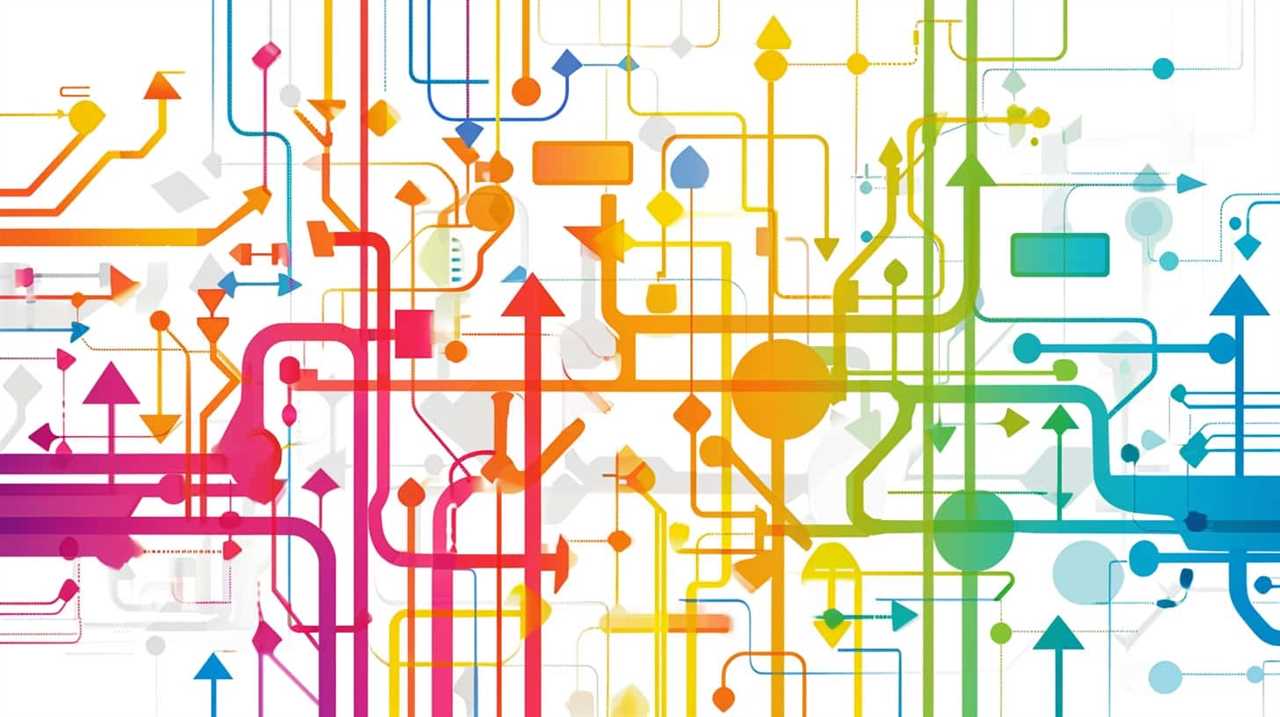
Halo Effect
Through our cognitive biases, we tend to form positive or negative impressions of individuals or objects based on a single prominent trait, known as the Halo Effect. This bias can have unintended consequences and hinder our ability to make accurate evaluations.
To navigate the Halo Effect, consider the following:
- Awareness: Recognize when the Halo Effect may be influencing your judgment. Be mindful of your tendency to attribute other positive or negative qualities to someone or something based on a single characteristic.
- Diverse evaluation methods: Instead of relying solely on a single trait, use a variety of evaluation methods to gather a more comprehensive understanding. Consider gathering feedback from multiple sources, conducting thorough research, or employing objective assessments.
- Critical thinking: Challenge your initial impressions and analyze the situation or person objectively. Seek out alternative viewpoints and gather additional information to create a more balanced evaluation.
Gambler’s Fallacy
We often fall victim to the Gambler’s Fallacy, a cognitive bias that leads us to believe that past outcomes will influence future probabilities. This fallacy is rooted in our tendency to see patterns where none exist and to assign meaning to random events. When it comes to gambling or making decisions based on probability, the Gambler’s Fallacy can lead us astray.
The Gambler’s Fallacy occurs when we believe that the likelihood of a certain outcome increases or decreases based on previous outcomes. For example, if we flip a coin and it lands on heads five times in a row, we might mistakenly believe that the next flip is more likely to result in tails. This is a fallacy because each coin flip is an independent event and has no bearing on future outcomes.

Understanding the Gambler’s Fallacy is essential for avoiding probability illusions and making informed decisions. Recognizing that past outcomes don’t affect future probabilities allows us to approach gambling, investing, or any decision involving probability with a clear and rational mindset. By understanding the true nature of probability, we can avoid costly mistakes and make more accurate predictions.
Overconfidence Bias
The next cognitive bias we’ll explore is the tendency for individuals to have an inflated sense of confidence, known as the overconfidence bias. This bias leads us to overestimate our abilities and the accuracy of our judgments, which can have a significant impact on decision making.
Here are three key points to consider when it comes to overcoming overconfidence and understanding its impact:
- Self-awareness: Recognizing and acknowledging our own overconfidence is the first step towards overcoming it. We need to actively question our assumptions, seek feedback from others, and constantly evaluate the validity of our beliefs. By being aware of our tendency to be overconfident, we can make more informed decisions and avoid costly mistakes.
- Embrace uncertainty: Overconfidence often arises from a desire for certainty. However, in a rapidly changing and complex world, certainty is often elusive. Embracing uncertainty and being comfortable with ambiguity can help us make more realistic assessments of our abilities and reduce the likelihood of overconfidence bias creeping into our decision making.
- Diversify perspectives: Overconfidence can be mitigated by seeking out diverse perspectives and opinions. By actively seeking input from others with different backgrounds and expertise, we can gain a more comprehensive understanding of a situation and challenge our own biases. This can lead to better decision making and help counteract the impact of overconfidence.
Frequently Asked Questions
What Are Some Real-Life Examples of the Anchoring Bias?
The anchoring bias can have a significant impact on financial decision making, leading us to rely too heavily on initial information. In medical diagnoses, overcoming this bias requires considering a broader range of possibilities.
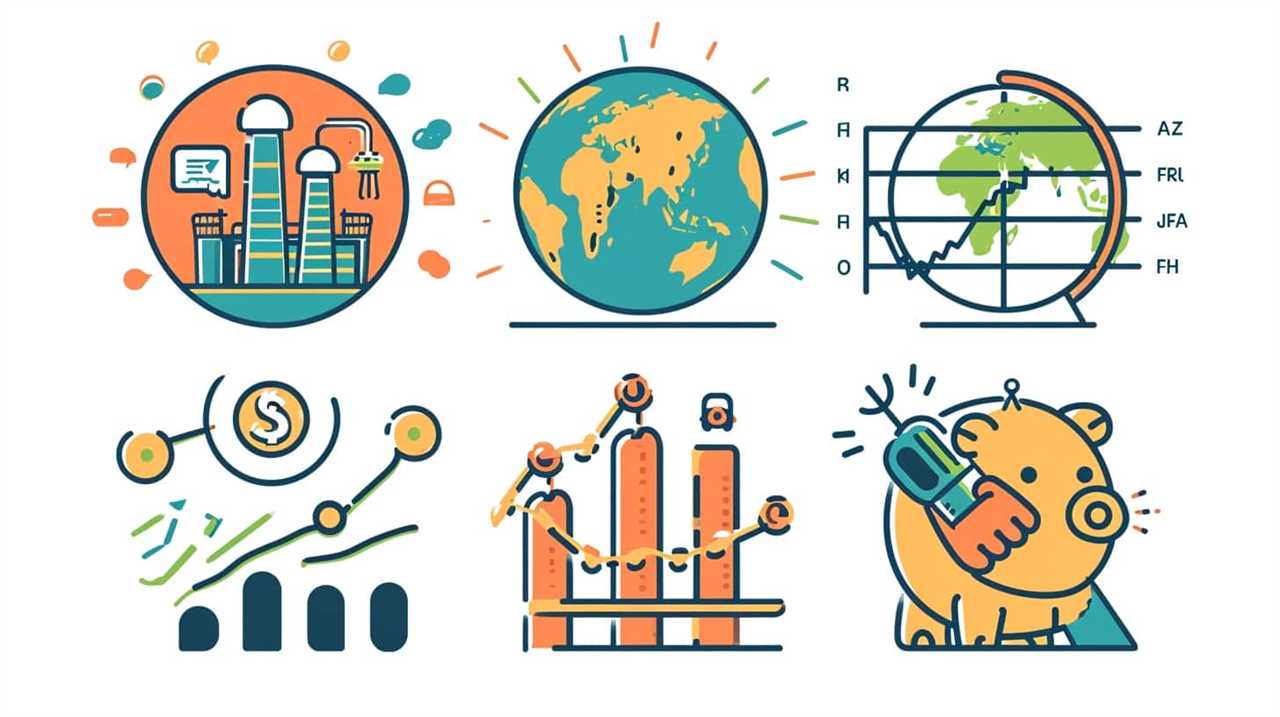
How Does the Confirmation Bias Impact Decision-Making in the Workplace?
In the workplace, overcoming confirmation bias is crucial for effective decision-making. By recognizing how cognitive biases impact our choices, we can strive for innovation and avoid being trapped by preconceived notions.
Can You Provide Some Strategies to Overcome the Availability Bias in Daily Life?
We can overcome the availability bias in daily life by employing strategies such as seeking out diverse perspectives, gathering more information, and consciously challenging our initial thoughts and assumptions.
What Are the Potential Consequences of Falling Prey to the Framing Effect in Negotiations?
Falling prey to the framing effect in negotiations can have serious consequences. It distorts our perception of options, leading to poor decision-making. We risk losing out on favorable outcomes and settling for less than we deserve.
How Does the Halo Effect Influence Our Perceptions of Others in Social Situations?
The halo effect significantly impacts our social judgments and influence dynamics. It shapes our initial perceptions of others, often leading to biased evaluations and assumptions based on a single characteristic or trait.

Conclusion
In unraveling Kahneman’s cognitive biases, it becomes clear that our minds aren’t as rational as we may think. Anchoring bias, confirmation bias, availability bias, framing effect, loss aversion, halo effect, gambler’s fallacy, and overconfidence bias all shape our decision-making processes.
Understanding and recognizing these biases is crucial for making more informed choices. By shedding light on the quirks of our cognitive machinery, we can strive to overcome these biases and approach decision-making with greater clarity and objectivity.
Lauren’s talent in writing is matched by her passion for storytelling. Her love for books and deep understanding of culture and entertainment add a distinct flavor to her work. As our media and press contact, Lauren skillfully bridges the gap between afterQuotes and the broader media landscape, bringing our message to a wider audience.
Economic Theories and Philosophers Quotations
8 Ways Neoliberalism Reshaped the Global Economy

Ladies and gentlemen, I welcome you to explore the effects of neoliberalism on the global economy. Like a powerful gust of wind changing the shape of a wheat field, this influential ideology has greatly impacted our economic landscape.
In this concise journey, we will uncover eight key ways in which neoliberalism has altered the way economies function. From the deregulation and free trade that have opened up new avenues for innovation, to the privatization of public services that has sparked entrepreneurial spirits, we will delve into the intricate web of neoliberal policies.
Prepare to witness the rise of global interconnectedness, the impact of income inequality, and the influence of corporate power. Together, let us uncover the transformative power of neoliberalism on the world stage.
Key Takeaways
- Deregulation and free trade have led to increased competition and market efficiency, as well as the expansion of international trade and integration of markets.
- The privatization of public services has resulted in greater efficiency and cost-effectiveness, but also raised concerns about accountability and unequal access to essential services.
- Financialization and speculation have contributed to economic instability and risk, concentration of wealth, and widening inequality, highlighting the need for critical examination of its role in the economy.
- The neoliberal policies of deregulation and unchecked risk-taking by financial institutions have led to economic instability, widening income and wealth gaps, and undermined social cohesion and consumer resilience.
Deregulation and Free Trade
Deregulation and free trade have transformed various industries and markets worldwide. The dismantling of regulations and the push towards trade liberalization have been key components of the neoliberal economic agenda.
These policies have aimed to remove barriers and restrictions on businesses, allowing for greater competition and market efficiency.
By dismantling regulations, governments have sought to reduce bureaucratic hurdles that hindered business growth and innovation. This has led to increased flexibility and adaptability within industries, allowing companies to respond more quickly to changing market conditions. Additionally, the removal of regulations has encouraged entrepreneurship and the entry of new players into the market, fostering innovation and driving economic growth.
Trade liberalization, on the other hand, has focused on reducing tariffs, quotas, and other trade barriers between countries. This has resulted in the expansion of international trade and the integration of markets on a global scale. As a result, businesses have gained access to larger customer bases and a wider range of suppliers, leading to increased competition and specialization.
The deregulation and free trade policies haven’t been without their critics. Some argue that these policies have led to the concentration of wealth and power in the hands of a few, while others point to the negative environmental and social impacts of unregulated markets.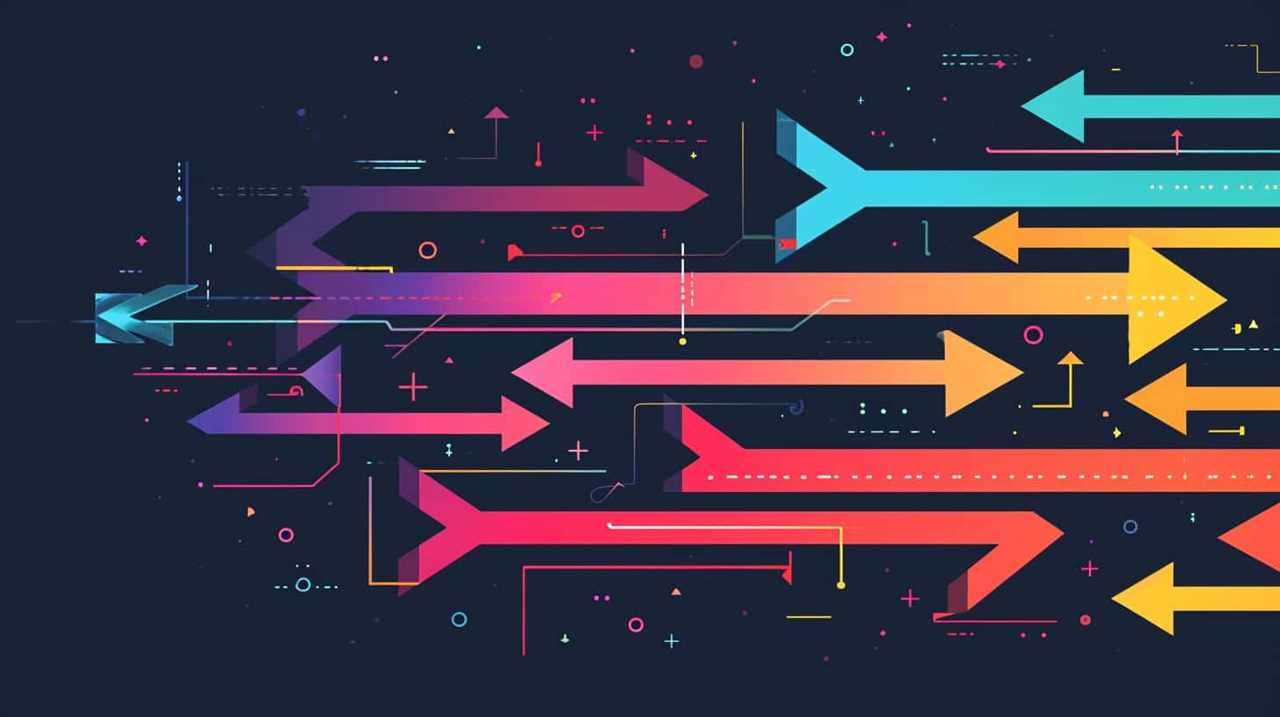
However, it’s undeniable that these policies have played a significant role in reshaping the global economy and fostering innovation.
Privatization of Public Services
One significant aspect of neoliberalism’s impact on the global economy is the privatization of public services. Under neoliberal policies, there’s been a trend towards transferring the ownership and control of public services from the government to private corporations. This shift has had both positive and negative effects on service quality and corporate control.
Increased Efficiency: Proponents argue that privatizing public services allows for greater efficiency and cost-effectiveness. Private corporations are driven by profit motives, which can incentivize them to streamline operations and improve service delivery.
Lack of Accountability: However, privatization can also lead to a loss of accountability. Private corporations may prioritize profit over the public interest, potentially resulting in reduced service quality or neglect of underserved communities.
Unequal Access: Another concern is the potential for unequal access to essential services. Privatization may exclude marginalized groups who can’t afford the cost of private services, exacerbating existing inequalities.
Financialization and Speculation
Financialization and speculation, two key aspects of neoliberalism, have had significant impacts on the global economy. One consequence is increased economic instability and risk, as financial markets have become more volatile and prone to crises.
Additionally, financialization has contributed to the concentration of wealth and widening inequality, as speculative activities often benefit a small group of wealthy individuals or institutions at the expense of the broader population.
These effects highlight the need for a critical examination of the role of financialization and speculation in shaping our economic system.
Economic Instability and Risk
How has neoliberalism contributed to the increase in economic instability and risk?
Neoliberalism, with its emphasis on deregulation and free markets, has played a significant role in exacerbating economic volatility and systemic risk. Here are three key ways in which neoliberal policies have contributed to this instability:
- Financialization: Neoliberalism has promoted the expansion of financial markets and the prioritization of profit-driven financial activities. This has led to the emergence of complex financial products and excessive speculation, increasing the potential for market crashes and economic downturns.
- Deregulation: Neoliberal ideology advocates for reduced government intervention and oversight in the economy. While this has allowed for more market freedom, it has also created a regulatory void that can lead to unchecked risk-taking by financial institutions, as seen in the 2008 global financial crisis.
- Inequality: Neoliberal policies often prioritize the interests of the wealthy and corporations, leading to widening income and wealth gaps. This inequality not only undermines social cohesion but also creates economic instability, as it limits the purchasing power and resilience of the majority of consumers.
Wealth Concentration and Inequality
Neoliberal policies have contributed to the concentration of wealth and the exacerbation of inequality through the expansion of financialization and speculation. Financialization refers to the increasing role of financial markets, instruments, and institutions in the economy, while speculation involves the buying and selling of assets with the expectation of making quick profits.
These processes have allowed the wealthy to accumulate vast amounts of wealth, while leaving the majority of the population struggling to keep up. Wealth redistribution and social mobility, which are crucial for a fair and inclusive society, have been hindered by neoliberal policies that prioritize the interests of the wealthy and corporations.
As a result, income inequality has soared and social mobility has declined, making it increasingly difficult for individuals to move up the economic ladder. This concentration of wealth and inequality will be further explored in the subsequent section on the reduction of government intervention.
Reduction of Government Intervention
One of the key effects of neoliberalism on the global economy has been the significant reduction in government intervention. This shift towards economic liberalism has had a profound impact on the way nations operate and interact in the global marketplace.
Here are three key aspects of this reduction in government intervention:
- Deregulation: Neoliberalism promotes the removal of regulations and barriers that restrict market forces. This has led to the relaxation of rules in various sectors, such as finance, telecommunications, and transportation. The aim is to encourage competition and innovation, allowing market forces to determine prices and allocate resources efficiently.
- Privatization: Governments have increasingly turned to privatization, transferring the ownership and control of state-owned enterprises to the private sector. This has led to the expansion of private companies in industries such as utilities, healthcare, and transportation. Proponents argue that privatization increases efficiency and productivity through market competition.
- Trade liberalization: Neoliberal policies have also focused on reducing trade barriers, such as tariffs and quotas, through international agreements like the World Trade Organization. This has facilitated the growth of global trade and the integration of economies, enabling businesses to access larger markets and consumers to benefit from a wider range of goods and services.
These changes in government intervention have paved the way for the subsequent phenomenon of globalization and outsourcing.
Globalization and Outsourcing
Globalization and outsourcing have been key components of neoliberalism, reshaping the global economy in significant ways.
By promoting economic interdependence, outsourcing has allowed businesses to take advantage of lower costs and access to new markets.
However, this has also had a profound impact on local industries, as jobs and production have been shifted overseas, leading to concerns about unemployment and the erosion of domestic manufacturing capabilities.
The rise of globalization and outsourcing highlights the complex trade-offs and challenges brought about by neoliberal policies.
Economic Interdependence Through Outsourcing
Through outsourcing, we’ve become economically interdependent with other countries. This phenomenon has transformed global supply chains and has had a significant impact on the global economy. Here are three key points to consider:
- Increased economic inequality: While outsourcing has led to economic growth and increased efficiency, it has also contributed to rising economic inequality. Developed countries often outsource labor-intensive tasks to developing countries with lower labor costs, leading to job losses and wage stagnation in the home country.
- Global supply chains: Outsourcing has resulted in the emergence of complex global supply chains. Companies now rely on multiple suppliers and partners across different countries, creating a network of interconnectedness. This interdependence has made it crucial for countries to maintain stability and cooperate in order to ensure the smooth functioning of the global economy.
- Innovation and competition: Outsourcing has fueled innovation and competition by allowing companies to access specialized expertise and resources from around the world. This has led to the development and adoption of new technologies, boosting productivity and economic growth. However, it has also intensified competition among countries and industries, requiring continuous innovation to stay competitive.
Impact on Local Industries
With the rise of neoliberalism, our local industries have been profoundly impacted by globalization and outsourcing. The increased interconnectedness of economies has led to the outsourcing of jobs to countries with lower labor costs, resulting in significant changes in the job market. While this has allowed for cost savings and increased profits for businesses, it has also led to job losses and insecurity for workers in our local communities.
The impact on the job market has been particularly felt in industries that require low-skilled labor, as these jobs are more easily outsourced. Moreover, the effects on local communities extend beyond job losses, as they face the challenge of adapting to the changing economic landscape.
As we delve further into the topic of neoliberalism, it’s important to consider its implications on income inequality and poverty.
Income Inequality and Poverty
While neoliberalism has had a significant impact on the global economy, it has also exacerbated income inequality and poverty. The implementation of neoliberal policies, such as deregulation and privatization, has resulted in a concentration of wealth and power in the hands of a few, leaving the majority of the population struggling to make ends meet.
Here are three key ways in which neoliberalism has contributed to income inequality and poverty:
- Weakening of labor unions: Neoliberal policies have undermined the collective bargaining power of workers, leading to a decline in wages and job security. With weakened labor unions, workers have less leverage to negotiate for fair wages and working conditions, further widening the income gap.
- Lack of social safety nets: Neoliberalism emphasizes individual responsibility and limited government intervention. As a result, social safety nets, such as unemployment benefits and welfare programs, have been scaled back or dismantled. This leaves vulnerable populations without adequate support, increasing their risk of falling into poverty.
- Financialization of the economy: Neoliberal policies have prioritized the financial sector, resulting in increased speculation and risk-taking. This has led to economic volatility and crises, disproportionately affecting those with lower incomes who lack the resources to weather such shocks.
Addressing income inequality and poverty requires a holistic approach that includes policies aimed at redistributing wealth, strengthening social safety nets, and promoting inclusive economic growth. By reevaluating the impact of neoliberalism and implementing innovative solutions, we can strive towards a more equitable and prosperous future.
Austerity Measures and Fiscal Policy
Neoliberalism reshaped the global economy by implementing austerity measures and shaping fiscal policy. Austerity measures, characterized by fiscal discipline and government spending cuts, became a prominent tool in the neoliberal agenda. Proponents argued that reducing government expenditure and debt would lead to economic growth and stability. However, the impact of these measures has been highly debated.
One of the main ways in which neoliberalism implemented austerity measures was through structural adjustment programs imposed by international financial institutions such as the International Monetary Fund and the World Bank. These programs often required recipient countries to adopt strict fiscal policies, including reducing public spending on social welfare programs and public services.
Critics argue that austerity measures have had negative consequences, particularly for the most vulnerable members of society. Government spending cuts often result in reduced access to essential services such as healthcare and education, leading to increased inequality and social unrest.
Moreover, austerity measures have been criticized for their potential to exacerbate economic downturns. By reducing government spending during times of economic recession, the demand for goods and services can decrease further, prolonging the downturn.
As we delve into the subsequent section about the rise of corporate power and influence, it becomes evident that the implementation of austerity measures and the shaping of fiscal policy had significant implications for the global economy.
How Does Marxian Economics Compare to Neoliberalism in Shaping the Global Economy?
Marxian economics and neoliberalism have contrasting impacts on the global economy. While neoliberalism emphasizes free market capitalism, Marxian economics focuses on the effects of Marxian economics on labor, exploitation, and inequality. The two ideologies shape economic policies differently, leading to varying outcomes for wealth distribution and societal structures.
Rise of Corporate Power and Influence
The implementation of austerity measures and shaping of fiscal policy have paved the way for the rise of corporate power and influence in the global economy. As global capitalism continues to evolve, corporations have gained significant control over economic policies and decision-making processes, shaping the direction in which economies develop.
Here are three ways in which corporate influence has been on the rise:
- Lobbying and Political Contributions: Corporations have increasingly invested in lobbying efforts and political contributions to influence government policies and regulations in their favor. This allows them to shape the legal and regulatory framework to maximize their profits and maintain their dominance in the market.
- International Trade Agreements: With the proliferation of free trade agreements, corporations have gained the ability to expand their operations globally and exert influence over national governments. These agreements often prioritize the interests of multinational corporations, granting them special privileges and protections that can undermine local industries and workers’ rights.
- Corporate Capture of Regulatory Agencies: Regulatory agencies, tasked with safeguarding the public interest, are susceptible to corporate capture. This occurs when corporations exert undue influence over these agencies, leading to weakened regulations and inadequate oversight. As a result, corporate interests are prioritized over public welfare, potentially leading to environmental degradation, labor exploitation, and financial instability.
The rise of corporate power and influence in the global economy has profound implications for innovation, competition, and societal well-being. It’s crucial to critically examine and address the challenges posed by corporate influence to ensure a fair and sustainable global economic system.
Frequently Asked Questions
How Does Neoliberalism Affect the Environment and Natural Resources?
Neoliberalism’s impact on the environment and natural resources includes environmental degradation and increased resource extraction. These consequences stem from market-oriented policies that prioritize economic growth, often at the expense of sustainability and long-term ecological well-being.
What Role Does Neoliberalism Play in Shaping Education Systems?
Privatization of education and marketization of knowledge are key ways neoliberalism shapes education systems. These processes prioritize profit and competition, leading to increased inequality, commodification of education, and a focus on measurable outcomes rather than holistic learning.
How Does Neoliberalism Impact Social Welfare Programs and Access to Healthcare?
Neoliberalism’s impact on social welfare programs and access to healthcare has been significant. It has led to the privatization of public services, resulting in limited resources for poverty alleviation and unequal access to healthcare.
What Are the Consequences of Neoliberal Policies on Developing Countries?
Neoliberal policies in developing countries have resulted in economic inequality and increased foreign investment. As a result, these nations have experienced both positive and negative consequences, shaping their economic landscape and creating unique challenges.
How Does Neoliberalism Influence Labor Rights and Worker Protections?
Neoliberalism has had a significant impact on labor rights and worker protections. It has led to increased worker exploitation and income inequality, as it prioritizes the interests of corporations and reduces government regulation.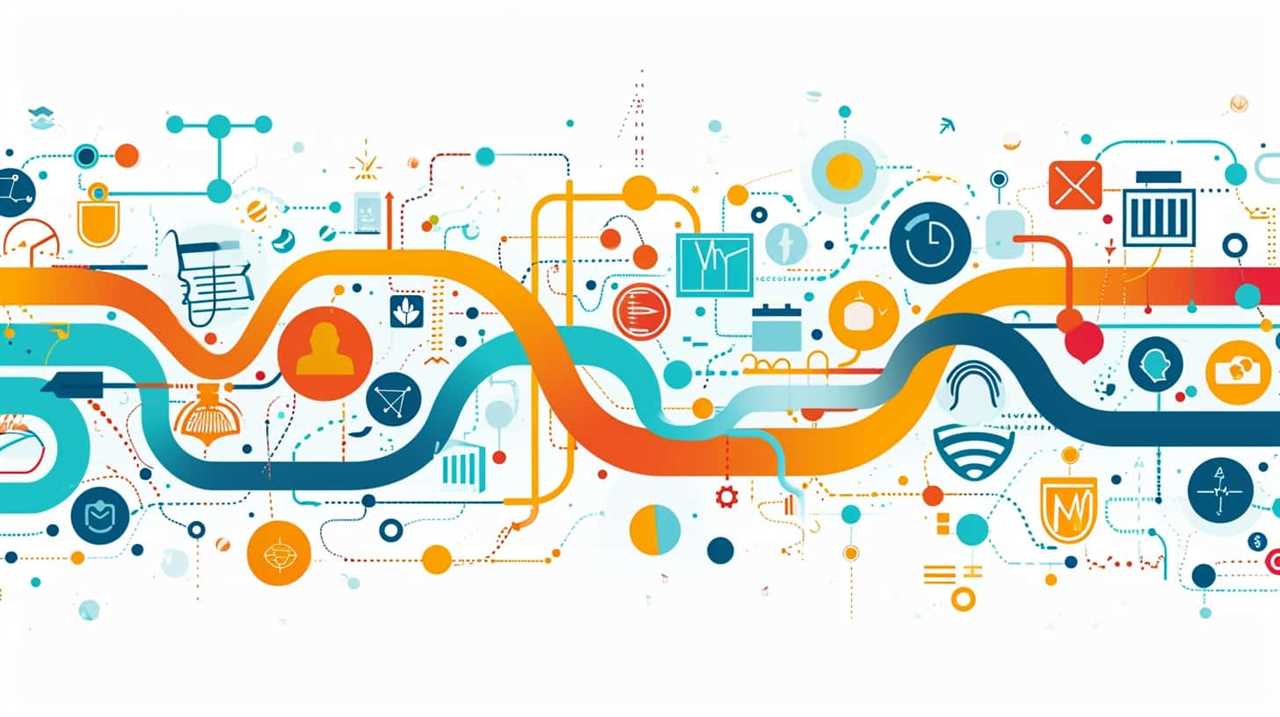
Conclusion
In conclusion, it’s evident that neoliberalism has significantly reshaped the global economy in numerous ways.
From the deregulation and free trade policies to the privatization of public services, these changes have had far-reaching effects.
Financialization and speculation, along with the reduction of government intervention, have also played a role in shaping the global economic landscape.
Additionally, globalization and outsourcing, income inequality and poverty, austerity measures, and the rise of corporate power have all contributed to the transformation of the global economy.

Lauren’s talent in writing is matched by her passion for storytelling. Her love for books and deep understanding of culture and entertainment add a distinct flavor to her work. As our media and press contact, Lauren skillfully bridges the gap between afterQuotes and the broader media landscape, bringing our message to a wider audience.
Economic Theories and Philosophers Quotations
Unpacking Kahneman’s Insights on Cognitive Biases

In our pursuit of innovation, we are on a mission to explore the fascinating discoveries of Daniel Kahneman’s research on cognitive biases.
These captivating concepts shed light on the intricate workings of our minds and how they shape our decision-making processes.
By delving into the depths of confirmation bias, availability heuristic, anchoring bias, framing effect, loss aversion, halo effect, and sunk cost fallacy, we uncover the hidden forces that influence our choices.
As we unravel the role of cognitive biases in the realm of behavioral economics, we gain a deeper understanding of the human psyche and the potential for transformative innovation.
Join us on this enlightening expedition as we unpack Kahneman’s profound insights, igniting a spark of creative thinking and paving the way for groundbreaking ideas.
Key Takeaways
- Cognitive biases are systematic patterns of deviation from rationality in thinking and decision-making processes.
- Confirmation bias causes individuals to seek and interpret information that confirms their pre-existing beliefs.
- The availability heuristic leads individuals to rely on easily accessible information to make judgments or decisions.
- Anchoring bias is the tendency to heavily rely on the first piece of information encountered.
Definition of Cognitive Biases
We will define cognitive biases as systematic patterns of deviation from rationality in our thinking and decision-making processes. Understanding cognitive biases is crucial in the context of decision making, as they can significantly impact the quality and accuracy of our choices.
These biases are inherent in human cognition and can influence our perception, judgment, and interpretation of information. Cognitive biases can arise from various factors, including our reliance on mental shortcuts, emotional influences, and social pressures. They can lead us to make errors in judgment, overlook relevant information, or make irrational decisions.
By understanding these biases, we can become more aware of our cognitive limitations and develop strategies to mitigate their effects. In the field of innovation, recognizing and addressing cognitive biases is particularly important. When creating new ideas or solutions, we need to challenge our assumptions, question our biases, and consider alternative perspectives. By doing so, we can foster a more open and creative environment conducive to innovation.
Transitioning to the subsequent section about confirmation bias in decision making, it’s important to delve deeper into one of the most prevalent and impactful cognitive biases that affect our decision-making processes.
Confirmation Bias in Decision Making
Confirmation bias is a cognitive bias that affects decision making by causing individuals to seek out and interpret information in a way that confirms their pre-existing beliefs or hypotheses.
Overcoming confirmation bias requires conscious effort and an open mind to consider alternative perspectives and evidence.
Failure to recognize and mitigate confirmation bias can have significant impacts on decision making, leading to flawed judgments, missed opportunities, and ineffective problem-solving.
Overcoming Confirmation Bias
To overcome confirmation bias in decision making, it’s crucial for us to actively challenge our preconceived notions and seek out diverse perspectives. Confirmation bias occurs when we actively search for, interpret, and remember information that confirms our existing beliefs, while ignoring or downplaying contradictory evidence. This bias can lead to flawed decision making and hinder innovation.
By consciously questioning our assumptions and exposing ourselves to a wide range of opinions and viewpoints, we can mitigate the impact of confirmation bias. Cognitive dissonance, the discomfort experienced when our beliefs are inconsistent with our actions, can be a powerful motivator for seeking out contradictory information. Additionally, managing information overload and practicing mindfulness can help us remain open-minded and receptive to new ideas.
Impacts of Biased Decisions
Biased decisions, particularly confirmation bias in decision making, can have significant impacts on our choices and outcomes. When we allow confirmation bias to influence our decision-making process, it can lead to several negative implications:
- Limited information processing: Confirmation bias narrows our focus to only seek out information that confirms our preexisting beliefs, causing us to overlook valuable and contradictory evidence.
- Missed opportunities: By disregarding opposing viewpoints, confirmation bias prevents us from considering alternative perspectives and potentially innovative solutions.
- Poor decision quality: Making decisions based on biased information can lead to suboptimal outcomes, as we may overlook important factors or fail to critically evaluate the available options.
- Reinforcement of biases: Confirmation bias can perpetuate and reinforce our existing beliefs, making it difficult to challenge and change our perspectives.
Understanding the consequences of cognitive biases is crucial for individuals and organizations seeking to promote innovation and make better decisions. By recognizing and mitigating confirmation bias, we can improve the quality of our choices and increase the likelihood of achieving desirable outcomes.
Availability Heuristic and Its Effects
One of the most prominent cognitive biases, the availability heuristic, greatly influences our decision-making process. This bias occurs when we rely on easily accessible information to make judgments or decisions, rather than considering the full range of available evidence. The availability heuristic can have a profound impact on our decision-making abilities, leading us to make judgments that may not be accurate or rational.
One of the effects of the availability heuristic is that it can lead to the overestimation or underestimation of the likelihood of an event occurring. For example, if we hear about a plane crash on the news, we may become more fearful of flying, even though statistically speaking, flying is much safer than driving. This bias can also be observed in everyday life when we make decisions based on recent and vivid examples, rather than considering the full scope of relevant information.
The availability heuristic can also influence our perceptions of risk and uncertainty. When we’re exposed to information that’s readily available, such as news stories or personal anecdotes, we may assign a higher level of risk or probability to certain events. This can impact our decision-making process and lead us to make choices that aren’t necessarily based on accurate assessments of risk.
In conclusion, the availability heuristic is a cognitive bias that can have significant effects on our decision-making process. By relying on easily accessible information, we may overlook important evidence or make judgments that aren’t based on accurate assessments of risk. Understanding and recognizing the influence of this bias is crucial for making more informed and rational decisions.
Moving on to the subsequent section, let’s explore the anchoring bias and its influence on our decision-making process.
Anchoring Bias and Its Influence
Continuing from our examination of the availability heuristic, let’s now delve into the influence of the anchoring bias on our decision-making process. Anchoring bias refers to the tendency to rely heavily on the first piece of information encountered when making judgments or decisions. This cognitive bias can have a significant impact on our choices and perceptions.
To better understand the influence of anchoring bias, consider the following:
- Anchoring in negotiations: When negotiating, the initial offer or proposal can anchor our perception of what’s reasonable, leading us to make concessions or accept terms that may not be in our best interest.
- Anchoring in price judgments: The initial price we encounter can serve as an anchor, influencing our perception of value. This bias can lead us to overpay for products or services.
- Anchoring in estimating quantities: The initial quantity we encounter can anchor our estimates, causing us to underestimate or overestimate subsequent quantities.
- Anchoring in decision-making: The initial information we receive can anchor our decisions, leading us to overlook or undervalue other relevant information.
To mitigate the influence of anchoring bias, it’s important to be aware of its existence and employ strategies such as:
- Seeking alternative perspectives or information.
- Deliberately questioning and reevaluating initial judgments or estimates.
- Using external benchmarks or objective standards to evaluate options.
- Engaging in deliberate and systematic decision-making processes.
Understanding the influence of anchoring bias and employing these strategies can help us make more informed and rational decisions.
Transitioning into the subsequent section about the framing effect on perception and choices, let’s explore how the way information is presented can impact our decision-making process.
Framing Effect on Perception and Choices
Let’s now explore the impact of the framing effect on our perception and choices. The framing effect refers to the way in which information is presented or "framed" can significantly influence decision making, perception, and choices. This cognitive bias highlights the fact that people tend to react differently to the same information depending on how it is presented to them.
To illustrate the framing effect, let’s consider the following table:
| Frame 1 | Frame 2 |
|---|---|
| Positive | Negative |
| Gain | Loss |
| Success | Failure |
| Winning | Losing |
In this table, we can see that the same concept is framed in a positive or negative manner. For example, gaining money is framed positively, while losing money is framed negatively. Research has shown that individuals are more risk-averse when faced with a potential loss, and more risk-seeking when faced with a potential gain. This means that the way information is framed can influence how individuals perceive risks and make decisions.
Understanding the framing effect on decision making, perception, and choices is crucial in various fields, including marketing, public policy, and negotiation. By carefully framing information, organizations and individuals can influence the way their audience perceives and reacts to it. This knowledge can be leveraged to shape behaviors, encourage certain choices, and drive innovation.
Overconfidence Bias in Predictions
When it comes to making predictions, humans have a tendency to be overconfident in their abilities. This bias leads us to overestimate our chances of future success while simultaneously ignoring potential risks and obstacles.
Research has shown that this overconfidence bias can have significant consequences, leading to poor decision-making and increased vulnerability to financial, professional, and personal setbacks.
Overestimating Future Success
We often fall victim to the overconfidence bias in our predictions, leading us to overestimate our future success. This cognitive bias stems from our tendency to overestimate our abilities and have unrealistic expectations about our performance.
Here are four key points to consider:
- Optimism bias: We’ve a natural inclination to see the future in a positive light, which leads us to believe that we’ll be more successful than we actually end up being.
- Confirmation bias: We seek out information that confirms our beliefs and ignore or downplay evidence that contradicts our optimistic predictions.
- Illusion of control: We’ve a tendency to believe that we’ve more control over outcomes than we actually do, leading us to overestimate our ability to achieve desired results.
- Planning fallacy: We often underestimate the time, effort, and resources required to complete a task, leading to unrealistic expectations of future success.
Ignoring Potential Risks
The article explores the cognitive bias of overconfidence in predictions, specifically focusing on the tendency to ignore potential risks. This bias, known as the overconfidence bias, refers to the tendency to have excessive confidence in one’s own predictions or abilities, leading to an underestimation of potential dangers.
Research has shown that individuals who exhibit this bias often fail to adequately assess the risks associated with their actions or decisions. This can have significant consequences, particularly in domains where risk assessment is crucial, such as finance, healthcare, and engineering.
Loss Aversion and Risky Decision Making
Loss aversion and risky decision making are inherent cognitive biases that influence our behavior and choices. These biases can have a significant impact on how we approach and evaluate potential risks, ultimately affecting the decisions we make. When it comes to risk aversion, individuals tend to have a strong preference for avoiding losses rather than achieving gains. This bias can lead to a reluctance to take risks, even when the potential rewards may outweigh the potential losses.
Here are four key insights into loss aversion and its influence on risky decision making:
- Framing effects: The way information is presented can significantly impact how individuals perceive and evaluate risks. Loss aversion means that individuals are more sensitive to potential losses than potential gains, which can lead to different risk assessments depending on how the information is framed.
- Prospect theory: Developed by Kahneman and Tversky, this theory suggests that individuals evaluate potential outcomes based on gains and losses from a reference point, rather than in absolute terms. This reference point can greatly influence risk aversion and decision making.
- Endowment effect: Loss aversion is closely tied to the endowment effect, which is the tendency for individuals to value something more highly when they own it. This bias can make individuals less willing to take risks with their possessions, as the potential loss feels more significant.
- Regret aversion: Loss aversion is also linked to regret aversion, where individuals make decisions based on avoiding potential regret rather than maximizing potential gains. This bias can lead to risk-averse behavior, as individuals prioritize avoiding the regret of making a wrong decision over the potential benefits of taking a risk.
Understanding loss aversion and its impact on risky decision making can help individuals and organizations make more informed choices. By recognizing and mitigating these biases, we can strive for innovation and growth while managing potential risks effectively.
Halo Effect and Its Impact on Judgments
The Halo Effect can significantly influence our judgments and perceptions. This cognitive bias refers to the tendency to let our overall impression of a person, brand, or product influence our judgment of specific attributes or qualities. It plays a crucial role in shaping our first impressions and can impact our decision-making process in various contexts, including marketing strategies.
When it comes to first impressions, the Halo Effect can be particularly powerful. Research has shown that a positive initial impression can lead us to overlook or downplay negative traits or flaws in individuals or products. For example, if we perceive someone to be physically attractive, we may assume they possess other positive qualities such as intelligence or kindness.
In marketing, the Halo Effect can be strategically leveraged to shape consumer perceptions and preferences. Companies often employ celebrity endorsements or attractive models to create a positive association with their products. By associating their brand with desirable qualities, they aim to influence consumer decision-making and increase sales.
Understanding the Halo Effect is crucial for marketers and individuals alike. By being aware of this bias, we can make more informed judgments and avoid falling into the trap of relying solely on first impressions.
Now, let’s delve into another cognitive bias that affects our decision-making process: the sunk cost fallacy and its impact on rationality.
Sunk Cost Fallacy and Rationality
Continuing from the previous subtopic on the Halo Effect, let’s now explore the impact of the sunk cost fallacy on our rational decision-making.
The sunk cost fallacy refers to our tendency to continue investing time, money, or effort into something simply because we’ve already invested in it, even if it no longer makes logical sense. This cognitive bias can have significant implications for our economic behavior and decision-making processes.
- The sunk cost fallacy can lead us to make irrational decisions, as we prioritize past investments over future outcomes.
- It can prevent us from cutting our losses and moving on to more productive ventures.
- The fallacy can also result in a distorted perception of value, as we overvalue things that we’ve already invested in.
- Furthermore, the sunk cost fallacy can perpetuate a cycle of poor decision-making, as we feel compelled to keep investing in failing projects.
Understanding and overcoming the sunk cost fallacy is crucial for making rational decisions in our personal and professional lives. By recognizing this bias, we can avoid being trapped by past investments and instead focus on the potential benefits and costs of future actions.
Now, let’s delve further into the role of cognitive biases in behavioral economics.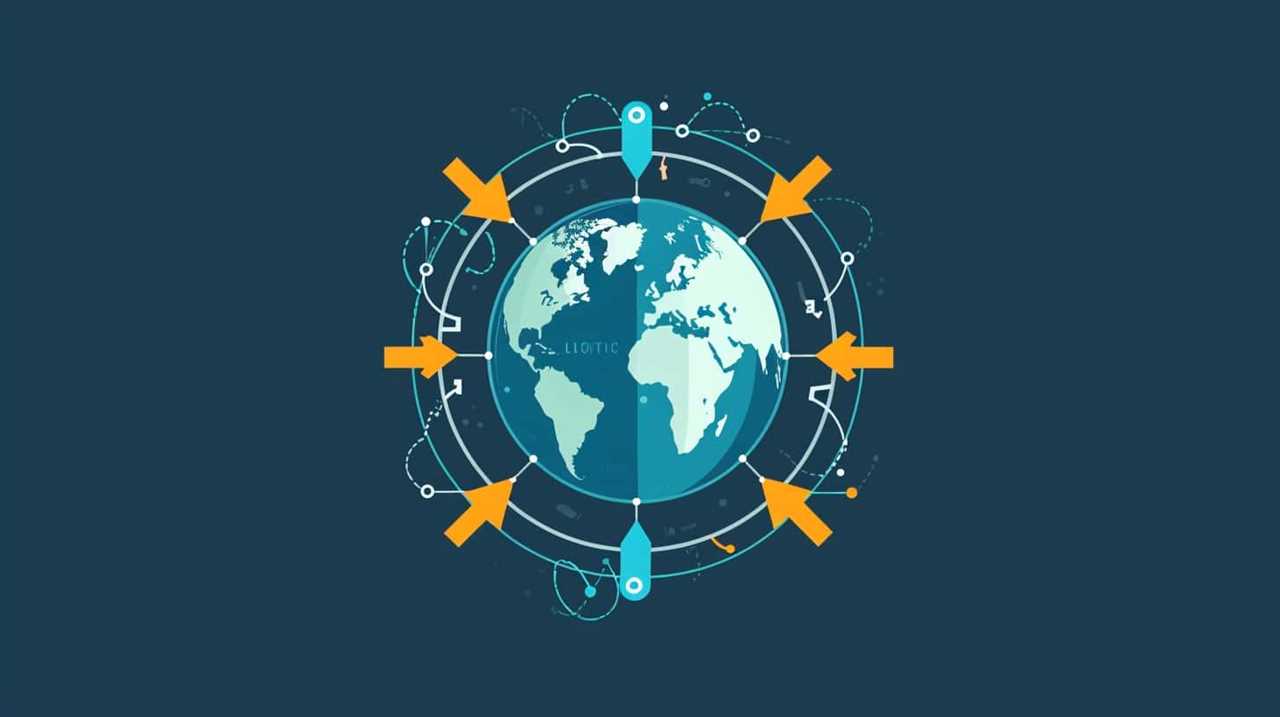
The Role of Cognitive Biases in Behavioral Economics
When examining the role of cognitive biases in behavioral economics, it’s crucial to consider their impact on decision-making and their influence on market behavior.
Cognitive biases can significantly affect the way individuals make choices, leading to suboptimal decisions and irrational behavior. These biases can distort perception, judgment, and decision-making processes, ultimately shaping economic outcomes and market dynamics.
Understanding the role of cognitive biases is essential for developing effective strategies and interventions to mitigate their negative effects and promote rational decision-making in economic contexts.
Impact on Decision-Making
Cognitive biases play a significant role in shaping our decision-making processes in the field of behavioral economics. These biases, such as the overconfidence bias, can lead us to make irrational and suboptimal choices. Understanding the impact of cognitive biases on decision-making is crucial for developing effective strategies to mitigate their negative effects.
- Overconfidence bias: This bias causes individuals to have an inflated sense of their own abilities and knowledge, leading to overestimation of the accuracy of their judgments and decisions.
- Anchoring bias: This bias occurs when individuals rely too heavily on the first piece of information they encounter, influencing subsequent judgments and decisions.
- Confirmation bias: This bias leads individuals to seek out information that confirms their existing beliefs, while ignoring or downplaying contradictory evidence.
- Availability bias: This bias occurs when individuals rely on readily available information, such as recent or vivid examples, to make judgments and decisions, instead of considering the full range of relevant information.
Influence on Market Behavior
Our understanding of the influence of cognitive biases on market behavior in behavioral economics is deepened by exploring Kahneman’s insights.
Cognitive biases have a significant impact on investment choices and consumer behavior. When making investment decisions, individuals often rely on heuristics, or mental shortcuts, which can lead to biased judgments and suboptimal outcomes.
For example, the availability bias may cause investors to overweight recent information and ignore long-term trends. Additionally, the anchoring bias can lead investors to anchor their decisions on irrelevant information, such as the initial price of a stock.
These biases can distort market behavior, leading to asset mispricing and market inefficiencies. Understanding and mitigating these biases is crucial for investors and policymakers to make informed decisions and improve market outcomes.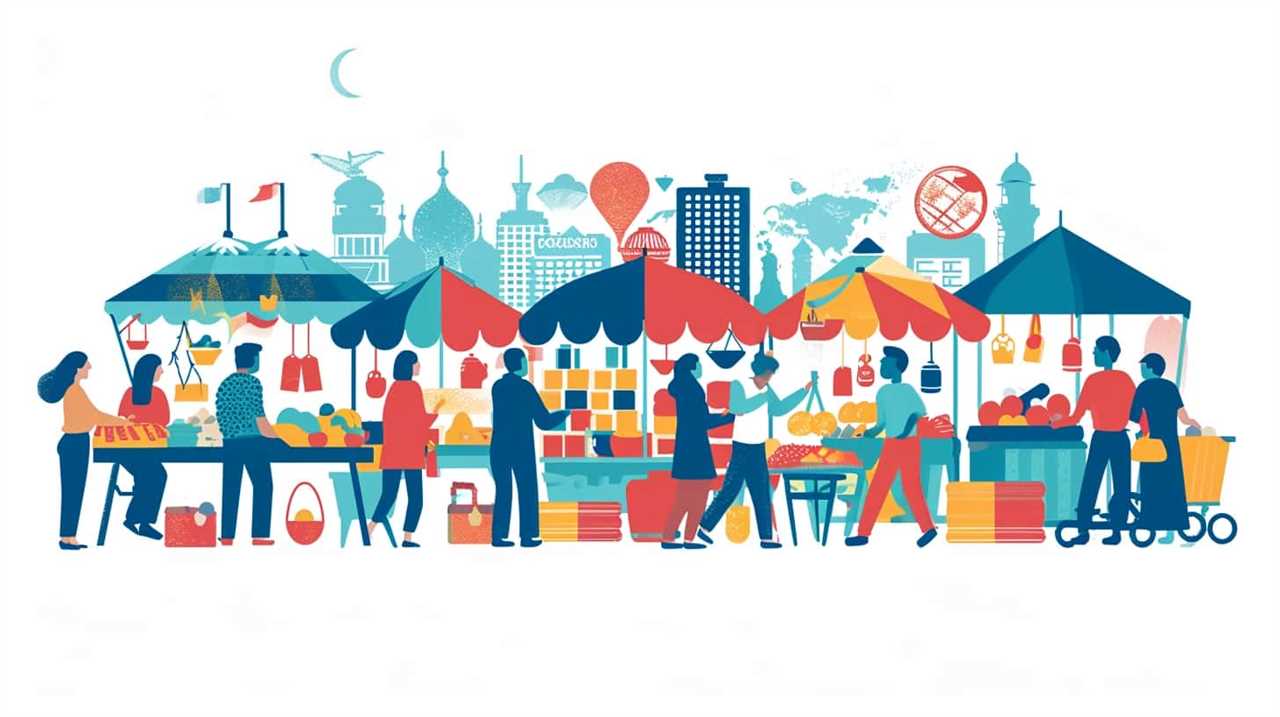
Frequently Asked Questions
What Are Some Real-Life Examples of Confirmation Bias in Decision Making?
In real life decision making, confirmation bias can be seen when we seek out information that confirms our pre-existing beliefs and ignore evidence that contradicts them. Emotions also play a role in decision making by influencing our perception and judgment.
How Does the Availability Heuristic Affect Our Everyday Choices?
The availability heuristic, a mental shortcut, greatly shapes our everyday choices. It influences consumer behavior, as we tend to rely on easily accessible information. Additionally, it impacts financial decision making, leading to biased judgments based on readily available data.
Can You Provide an Example of the Anchoring Bias and How It Influences Decision Making?
Anchoring bias occurs when we rely too heavily on the first piece of information we encounter. For example, when buying a car, we may be overly influenced by the initial price offered, even if it’s negotiable. Confirmation bias can then reinforce this decision.
How Does the Framing Effect Impact Our Perception and Decision Making?
The framing effect’s influence on decision making is significant. Our perception is shaped by how information is presented, leading to biased judgments and choices. Understanding cognitive biases like this is crucial for innovation and effective decision-making.
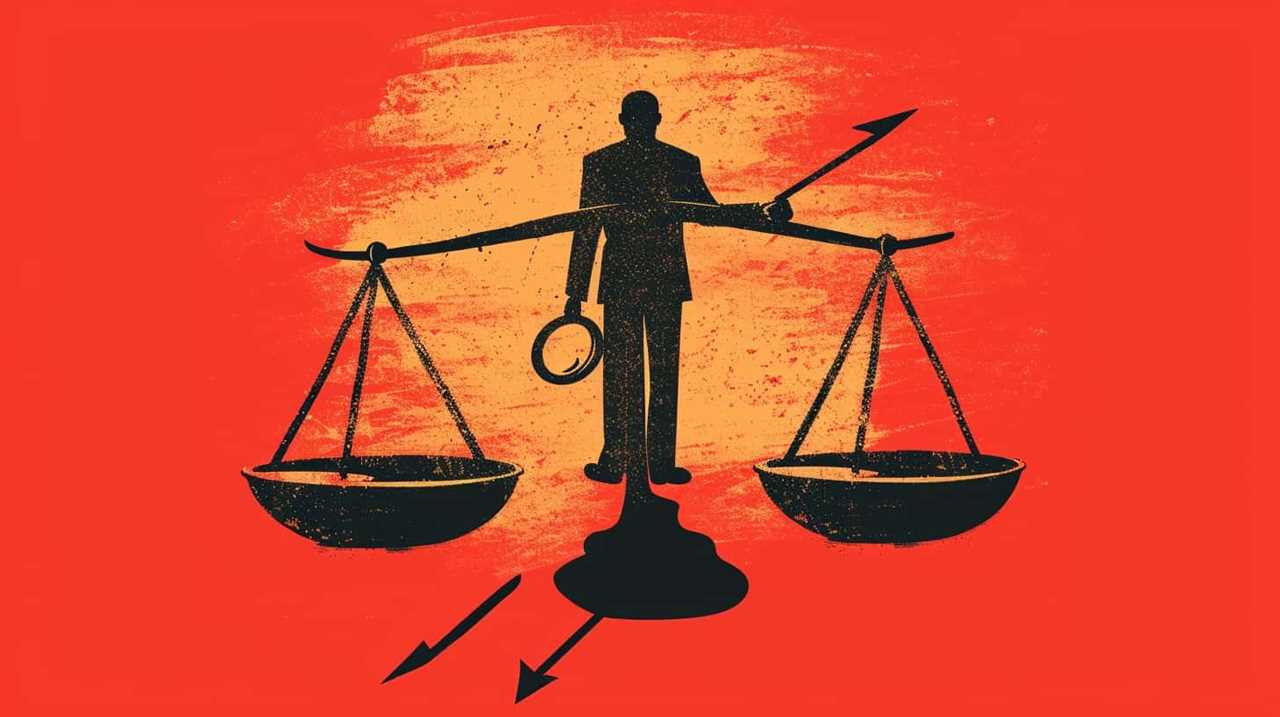
What Are Some Common Situations Where Overconfidence Bias Can Lead to Poor Predictions or Decision Making?
In situations where overconfidence bias is present, we often make poor predictions or decisions due to an inflated sense of our own abilities. These consequences can lead to missed opportunities and costly mistakes.
Conclusion
In conclusion, cognitive biases are deeply ingrained in our decision-making processes and can greatly impact the outcomes of our choices. They act as hidden forces, subtly shaping our perceptions and judgments.
Like a powerful undertow, these biases can pull us away from rationality and towards irrationality. It’s crucial to be aware of these biases and actively work to overcome them in order to make more informed and balanced decisions.
Ignoring them is like sailing blindly into treacherous waters, risking being swept away by the currents of our own biases.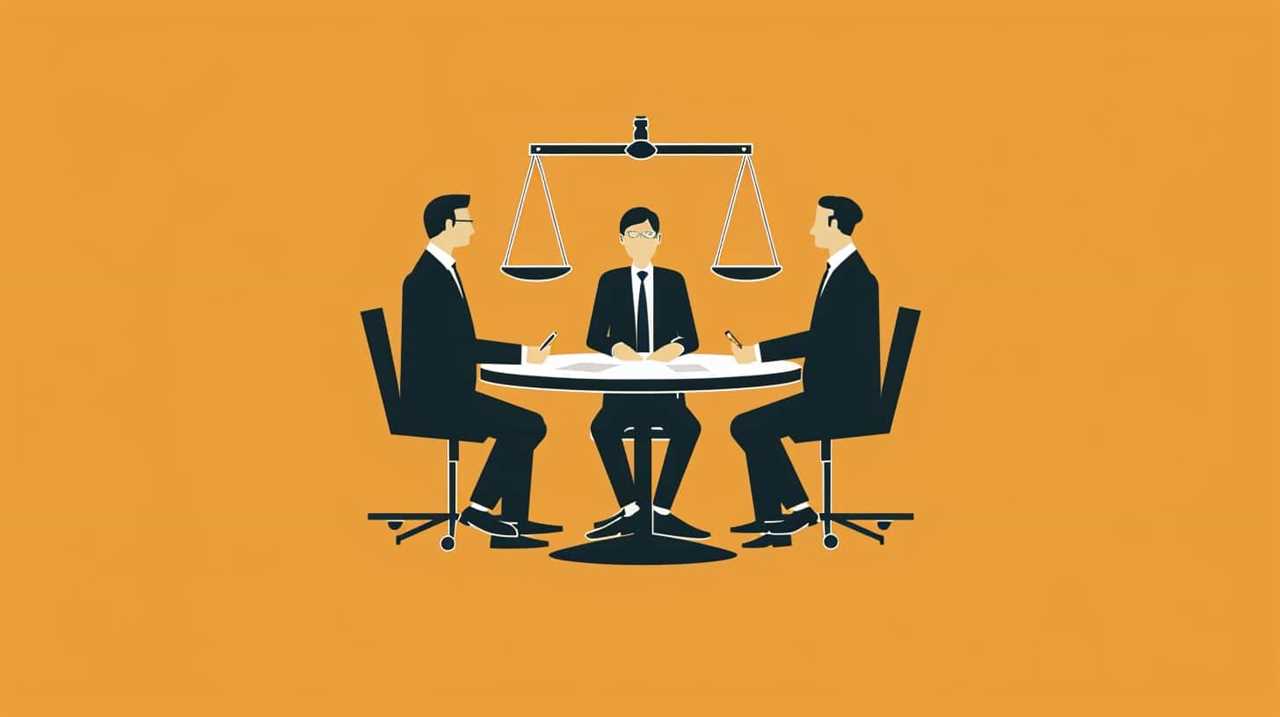
Lauren’s talent in writing is matched by her passion for storytelling. Her love for books and deep understanding of culture and entertainment add a distinct flavor to her work. As our media and press contact, Lauren skillfully bridges the gap between afterQuotes and the broader media landscape, bringing our message to a wider audience.
-

 Funerals Quotations3 months ago
Funerals Quotations3 months agoSoothing Hope Quotes for Funeral Reflections
-

 TV Shows Quotations2 months ago
TV Shows Quotations2 months agoTop 4 Unforgettable TV Drama Monologues
-

 Movies Quotations4 weeks ago
Movies Quotations4 weeks agoUnforgettable Cult Movie Quotes: A Compiled List
-

 Education and Knowledge1 week ago
Education and Knowledge1 week agoUnlock Success with the Best Study Motivation Quotes
-

 Travel and Exploration Quotations3 weeks ago
Travel and Exploration Quotations3 weeks agoWisdom on Waves: Notable Maritime Explorer Quotations
-
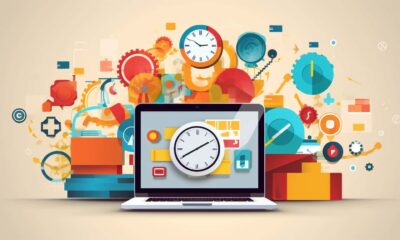
 Education and Knowledge1 week ago
Education and Knowledge1 week agoBest Study Quotes: Unlock Student Potential!
-

 Military Quotations2 months ago
Military Quotations2 months agoInspiring Military Quotations for Strength & Honor
-

 Travel and Exploration Quotations3 weeks ago
Travel and Exploration Quotations3 weeks agoWhy Travel Teaches Unforgettable Life Wisdom?

















